K.M. Weiland's Blog, page 34
September 2, 2019
Creating Your Character’s Inner Conflict: Want vs. Need
 Man vs. Self—it’s the most archetypal of all stories. This is because all stories are ultimately rooted in the primal and personal struggle of a character’s inner conflict.
Man vs. Self—it’s the most archetypal of all stories. This is because all stories are ultimately rooted in the primal and personal struggle of a character’s inner conflict.
As individuals, our conflicts with others or the world itself are almost inevitably either reflections or projections of our inner conflicts—our cognitive dissonances, our conflicting wants and needs, sometimes even our conflicting wants and wants or conflicting needs and needs. Finding inner peace is ultimately about working through the chatter of the many competing voices in our heads (some of them accurate, all of them passionate) on our way toward understanding the following:
What each voice is saying.
What underlying motivation each voice is representing.
Which motives and desires are healthy and which are not.
How to harmonize those that are healthy but still seem competitive.
Letting go of some desires in favor of others.
Coming to peace with all choices.
Moving forward in holistic action based on those choices.
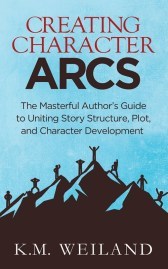
As I’m writing that list, it all sounds pretty lofty and serene. (I keep hearing Shifu from Kung-Fu Panda: “Inner peace… inner peace… inner pea— Would you please quiet down!”) But actually what that list describes is nothing more or less than the (positive) arc of a character over the course of a story.
In a story, that internal progression may be the forefront preoccupation of the author and the character. But more likely, the internal conflict is happening behind the scenes and under the surface of the external plot—which, as we’ve talked about before, can often be thought of as an external metaphor for the internal conflict. The external plot is the reflection/projection of the character’s inner struggle upon the external world.
Today, I want to take a closer look at that inner struggle. In discussions of character arc and theme, I’ve talked a lot about how a character’s inner conflict is framed around the dichotomous struggle between the Thing the Character Wants (which is Lie-based) and the Thing the Character Needs (which is Truth-based).
Although this black-and-white dichotomy is helpful for an at-a-glance understanding of the character’s inner conflict dynamics, we can find greater nuance by looking a little deeper at what is actually going on inside your character.
The Thing Your Character Wants: What Is It Really?
At its simplest, the Thing Your Characters Wants is the plot goal. Usually, the Want is part of a bigger picture—a desire or goal that existed prior to the specific conflict of your story’s Second Act—but it will funnel directly into your character’s plot goal.
Luke Skywalker’s Want is to escape his lonely orphaned adolescence and find a life of meaning and purpose in the larger galaxy. In the first movie, this translates to the specifically-iterated goal of wanting to “learn the ways of the Force and become a Jedi like my father”—a desire that progresses throughout the trilogy and frames his entire arc.

In any kind of Change Arc, the Want shows the Lie the Character Believes in action. The Want itself may not be a bad thing (more on that in a bit), but even if it is positive in itself, it represents a negative mindset or motivation. Within the character’s inner life, the Lie has created either a hole or a block. It is preventing the character from growing toward health; it may even be actively pushing him toward mental or moral sickness.
>>Click here to read about all the different types of character arc.
At the root of the Lie and its ambiguous motivations is a Ghost from the character’s past—something that created that hole or that block.
Luke Skywalker’s Ghost is his orphanhood, particularly the absence of his seemingly heroic father.
Luke Skywalker’s Lie is that to fill this inner hole and be worthy, he must be just like that father. This false belief fuels his impatience and reckless desire for adventure and glory.

Because the Lie and the Want are linked (as are the Need and the Truth—see below), the obvious implication is that the Want is bad.
Sometimes this is true. Sometimes what a character wants is blatantly destructive and evil. However, even in these situations, it’s important to note that the character will rarely see it so clearly. He wouldn’t pursue the Want if he didn’t believe, on some level, that it was worthy, that the end justified the means. As T.S. Eliot so chillingly noted:
Most of the evil in this world is done by people with good intentions.
At the very least, the character may believe that a “bad” Want at least represents the best possible outcome (as, for instance, when a woman believes she’s safer staying in an abusive relationship rather than leaving).
However, even more often, the Want won’t, in itself, be a bad thing. In fact, the Lie and its resultant motivation may not be obviously destructive either. After all, the reason the character believes in the Lie and wants the Want is because he thinks it will make his life better. Rather than recognizing his misconception of reality as part of the problem, he sees it as the answer.
This delusion is only possible if the character himself is either utterly deluded or if he’s caught between two conflicting choices, both of which bring their own benefits and consequences. In the case of the abused woman needing to leave her destructive relationship, there will be good things and bad things about either of her choices—which is why the struggle to choose may be waged down to the very bottom of her soul before it can be completely manifested in her external conflict.
Luke Skywalker’s Want and plot goal aren’t quantifiably bad or destructive. On the surface, all of his Wants and plot goals are actually quite healthy: wanting to become a Jedi, wanting to join the righteous Rebellion and fight the evil Empire, and wanting to move into a more meaningful life in a broader context.

Don’t get confused by the terminology. The “Want,” as a technical term within the theory of character arc, specifically references a plot-advancing desire that doesn’t (yet) represent a wholly integrated or holistic mindset. But just because the character currently wants the wrong thing or wants it for the wrong reason doesn’t mean that thing isn’t also something he does in fact need. The Ghost almost always represents a deep gaping need, and the character’s initial attempts to fulfill that need are rarely 100% misguided.
The Thing Your Character Needs: What Is It Really?
Whereas the Want is a direct equivalent of the plot goal, the Thing the Character Needs is a direct correlative of the thematic value. Whatever Truth your story is positing about reality, that is the ultimate Thing the Character Needs.
Luke Skywalker’s Need is to overcome the fear and anger that tempt him into darkness. He Needs to give up his hubristic desire to fight his way to glory as a means of protecting those he loves. What he learns over the course of the trilogy is that being a Jedi has nothing to do with being “like my father.” (Indeed, his father must learn to be more like Luke.) Even more than just that, being a Jedi is about surrendering the need for glory, accomplishment, or even control. He learns these Truths slowly, over the course of the series, climaxing in the moment when he refuses to give in to his hate and throws away his lightsaber.

The Need is always available—an often simplistic antidote to the character’s inner pain and conflict. But the character is confused, usually because the Want realistically seems to offer the correct solution to her problem. Just as often, the character may either push away from the Need or embrace it only halfway because she can’t gain the Need without also accepting significant consequences (for instance, in leaving an abusive relationship, a woman might have to leave behind much more than just the abuse—not to mention facing punitive reactions from the abuser).
And yet, no matter how difficult or Pyrrhic it might be to pursue and accept the Need, the character will never find health or wholeness without it. Ultimately, what the Need/Truth represents is a resolution of the inner conflict. Embracing the Truth shows the character which of the competing voices in her head is right. With this rightness—with Truth—comes a realignment with reality. When that happens, the character may have to face difficult consequences, but she will instantly be freed from the tremendous burden of fighting against reality itself.
Luke Skywalker’s Need is to let go of his fear, anger, and hatred. But in choosing to do so, he consciously puts at risk his own life, those of his family and friends, and even the success of the Rebellion. As it turns out, his story ends positively, since his choice catalyzes his father’s subsequent decision to destroy the Emperor and save his son. However, in a story with a Disillusionment Arc, the choice to embrace the Need and the Truth might, in fact, end negatively with the character facing the full consequences of the choice (e.g., Han and Leia die and the Rebellion fails).

Just as the Want is not always quantifiably “bad,” the Need is also not quantifiably “good” in the sense that choosing it means everything is suddenly sunshine and roses. If embracing the Need were that simplistic, the character would have no reason not to choose it outright at the beginning of the story.
The only reason any of us obstruct our own progression toward health is because pursuing health is hard. Anyone who chooses to lose weight for health reasons can attest to this. Even knowing your excess weight might someday threaten you with heart disease or diabetes does not mean the daily grueling sacrifices of exercising and eating right are easy choices. This is true even when your bad choices have direct consequences. Maybe you know eating that donut is going to make you feel crummy about five minutes from now. But saying no to all that yumminess is super-hard, so you eat it anyway.
The same goes for healthy mental and spiritual choices. Doing the right thing doesn’t always get you a pat on the back; sometimes it gets you crucified—metaphorically and even literally. Choosing to recognize truths about yourself and the world around you doesn’t always make life easier; sometimes it rips off the Band-Aid and makes your psychic wounds start bleeding all over again.
That said, the Need always represents the path toward health and recovery. A nuanced presentation of the Need will accurately portray all the reasons the character doesn’t embrace it outright. But this does not always mean the character might not also actively want the Need. For instance, anyone who is overweight (and lots of people who aren’t) want to lose pounds. They probably even know they need to lose pounds.
This is where some of the most powerful of a character’s inner conflict comes into play. A conflict between something a character Wants and something she does not (even if she Needs it) can be powerful and compelling. But usually, an even more compelling scenario is that in which the character internally struggles between two competing wants—or even two competing needs.
She can’t have both. She can only have one. In these cases, the true Need (in its technical, character-arc definition) will be the one that serves the greater good. For example, the character might Want to be with her true love. Nothing wrong with that. Indeed, the relationship may represent everything that is good about her. It promises nothing but health and happiness for the future.
But the character also Needs to do the right thing. For example, she has to make the big sacrifice and save the world because only she can do what must be done. Or, on a smaller scale, maybe doing the right thing means staying faithful to her marriage vows and making sure her children grow up in a stable family environment. If she were to choose the good Want over the better Need, she isn’t the only one who will suffer. And she will suffer. Choosing a Lie over a Truth is always a recipe for suffering, even if the consequences are delayed.
***
Why is all of this important? It’s important because as you’re planning your character’s arc and trying to identify the Want, Need, Lie, and Truth, it can be confusing (and limiting) when you feel you have to make the Want and the Lie obviously “bad” and the Need and the Truth obviously “good.” Even a good-vs.-evil conflict as obvious as Star Wars offers a nuanced view of why a character might simultaneously need the Want and want the Need.
Don’t get too caught up in the terminology. Ultimately, a character’s inner conflict is always between two things the character wants on at least some level. This is, in turn, mirrored in the outer conflict, which also represents want vs. want—the protagonist’s plot goal vs. the antagonist’s plot goal.
The more nuanced your approach to the dichotomies of Want vs. Need and Lie vs. Truth, the more nuanced your thematic discussion and your presentation of plot and character will always be.
Wordplayers, tell me your opinions! What Want and Need represent your character’s inner conflict? Tell me in the comments!
http://www.podtrac.com/pts/redirect.mp3/kmweiland.com/podcast/inner-conflict.mp3
Click the “Play” button to Listen to Audio Version (or subscribe to the Helping Writers Become Authors podcast in iTunes).
The post Creating Your Character’s Inner Conflict: Want vs. Need appeared first on Helping Writers Become Authors.
August 26, 2019
How to Use a “Truth Chart” to Figure Out Your Character’s Arc
 “How do I figure out my character’s arc?”
“How do I figure out my character’s arc?”
This is a question I receive commonly—and with good reason. Not only is your character’s arc central to all your other story choices—plot and theme foremost among them—character arc can also seem like one of the most daunting parts of story. Mostly this is because of its very integrality. In so many ways, your character’s arc is your story.
As we’ve discussed lately, character arc is particularly essential to your development of theme. If you don’t develop your theme and your protagonist’s character arc as two halves of the same whole, the story is likely to feel inorganic. Central to this relationship is your main thematic Truth, along with the character-specific Lie obstructing your character(s) from benefiting from a more realistic and holistic perspective.
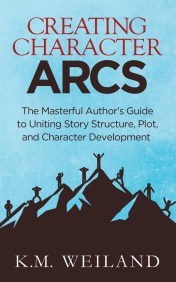
Over the years, I’ve created quite a few resources for helping authors (me too!) understand how to organically evolve a character’s understanding (or misunderstanding) of a story’s central thematic Truth. My blog series and book Creating Character Arcs offer an act-by-act, plot-point-by-plot-point examination of the relationship between character arc and plot structure. If you’re new to the idea of consciously constructing your character’s arc, I definitely recommend starting there for a big-picture view of the subject.
Today, I want to share a new tool, one I’ve refined for my own use while writing the sequels to my portal fantasy Dreamlander. I’m calling this tool a “Truth Chart.” It’s a fast, one-page beat sheet designed to help you get your head around the big picture of theme and character, so you can see at a glance if everything is holding together and progressing realistically.
Thematic Truths (and, to a lesser extent, Lies) often seem unwieldy in their abstract vastness (for example, the thematic Truth underlying your story may be something as titanic as Love). Because these universal subjects can be accurately expressed in so many ways, they’re often difficult to pin down. Over the course of your story, you may find yourself expressing the same core Truth in a dozen different ways. When trying to create a thematically cohesive story, the abstract nature of the subjects with which you’re dealing can often be bewildering. After all, we all want complex thematic premises, right?
Several years after writing my book Creating Character Arcs, I decided I needed a standalone post that addressed the Truth, so I wrote this one, using Marvel’s Black Panther as an example of how the thematic Truth can be developed act by act. While in the middle of outlining the (still-untitled) third book in my Dreamlander trilogy, I found myself referring to this post over and over again to help me ensure my plot and character arc were thematically sound at every beat. Somewhere along the road, this practice turned into a exercise all its own—the Truth Chart.
What Does a Truth Chart Look Like?
In a minute, we’ll define each of the specific parts of the Truth Chart, but first off, here’s what it looks like:
Story’s Big Truth (Main Theme):
Story’s Big Lie:
Character’s Specific Truth:
Character’s Specific Lie:
The Thing the Character Wants:
The Thing the Character Needs:
Ghost:
1st Act—Specific Manifestation of the “Big Lie”:
1st Act—The Story’s “Small” Introductory Truth:
2nd Act —An Aspect of the Truth Acting as an Antidote to the Specific Lie (Moment of Truth):
3rd Act—Remaining “Biggest” Chunk of the Lie:
3rd Act—Climactic Truth:
Building Your Thematic Truth Chart—Line by Line
For the entire picture of what each of these elements are and how they should interact with your story, you’ll want to check out both Creating Character Arcs and the previously-mentioned post “How the Truth Your Character Believes Defines Your Theme.” For now, here’s a quick overview of each piece.
Story’s Big Truth (Main Theme): This will be your story’s thematic premise. It should be a universal principle (e.g., “hope gives people a reason to go on living”) rather than your character’s specific Truth (e.g., “hope will help you survive and escape an unjust prison sentence”). It’s also best if you can create an intentional statement, rather than just a single-word principle (e.g., “Hope”).
Story’s Big Lie: This is the Big Lie standing in opposition to the Big Truth. Like the Big Truth, it is a generalized version of the specific Lie the Character Believes. This is the Lie that will affect every part of your story, including supporting characters, the world around the protagonist, and the antagonistic force.
Character’s Specific Truth: This your character’s specific version of the Truth, as found in the circumstances of this specific story. Many stories offer a “Big Truth” about “Redemptive Love,” but the manifestation of your story’s specific Truth can be as vastly different as Jane Eyre is from Logan.
Character’s Specific Lie: I positioned the Big Truth (and Big Lie) at the top of the chart because that Truth is your story’s defining principle. However, your creative process will more likely discover your story’s thematic premise via a specific Lie the Character Believes. This Lie is at the root of the plot problems. The character believes something about himself or the world that is untrue—and his lack of understanding will create consistent obstacles (aka, conflict) between him and his ultimate plot goal.
The Thing the Character Wants: Although often representative of a larger, more abstract desire (e.g., “to be loved”), the Thing the Character Wants will manifest specifically in her plot goal. Often, the Thing the Character Wants is at least partially misguided, based on the character’s mistaken (Lie-based) reasons for wanting it or methods for gaining it.
The Thing the Character Needs: The Thing the Character Needs is ultimately an understanding of the Truth. Usually, the Need will also be represented by a more concrete and specific outer-world objective. Sometimes the character will run away from the Need in the beginning, but in many stories, he may consciously “want” the Need, which exacerbates the inner conflict between his Lie-based Want and the Truth-based Need.
Ghost: The Ghost (sometimes referred to as the Wound) is a motivating event in your character’s past, which represents the moment and the reason the Lie first took root in her life. Often the Ghost is a traumatic event (e.g., the death of one’s parents), but it can also be a “good” occurrence (e.g., receiving too much praise for a specific accomplishment) that led to a misunderstanding about life.
1st Act—Specific Manifestation of the “Big Lie”: In the First Act, the story’s Big Lie will initially manifest in a specific message that is either urging the protagonist toward the Want and/or presenting a direct obstacle to the protagonist’s ability to move forward toward the Need and/or the Want. It is usually a mindset or belief presented by the Normal World around the protagonist (even in most Negative-Change Arcs). The character will likely take this manifestation of the Lie for granted without questioning it much, if at all.
1st Act—The Story’s “Small” Introductory Truth: Although the protagonist will spend most of the First Act in a comparative state of tranquility in which the Truth does not proactively contradict the Lie, the Truth will still be present via a “small” introductory version of the story’s larger thematic premise. This will often be the thinnest edge of the spear, the first tiny prick of Truth that begins to slowly wedge open a Change-Arc character’s awareness of the Lie (which, in a Negative-Change Arc, will prompt still greater resistance to the Truth).
2nd Act—An Aspect of the Truth Acting as an Antidote to the Specific Lie (Moment of Truth): After the setup of the First Act, the Second Act will represent the protagonist’s full-on immersion into the conflict—and, as an extension, her full-on immersion in her inner conflict between Lie and Truth. Throughout the First Half of the Second Act, events will conspire to grant her a growing (if often unconscious) awareness of the Truth.
This finally manifests in the external conflict at the Midpoint, when the character experiences a Moment of Truth. How the character reacts to this revelation will depend on what type of arc she is following. Regardless, the Truth she finds here will not be the complete Big Truth. Rather, it will be a “halfway” Truth of sorts. In order for this thematic revelation to flow properly with the external plot development, the Moment of Truth should be framed as an “antidote” to the specific Lie the character believed in the First Act.
Throughout the subsequent Second Half of the Second Act, the character will not fully reject the entire Lie (or embrace the entire Truth), but the Lie and Truth in which she believes are now modified versions of those with which she started out in the First Act.
3rd Act—Remaining “Biggest” Chunk of the Lie: The Third Act can be a tricky time for character arcs. The character needs to have completed most of his growth by this point, but the biggest revelations should remain in order for the Third Act to feel properly climactic. This is why it’s important to retain the “biggest” chunk of the Lie for the character to confront in the Third Act. By this point, the character will have embraced most of the Truth. But there’s a big mote still in his eye. There’s still a crucial bit of Lie that he (or the world around him) hasn’t seen past. This will be the Lie’s final “argument” within the story.
3rd Act—Climactic Truth: Combating the Third Act’s “big chunk of Lie” will be the climactic version of your story’s Truth. In essence, this will be the Big Truth of your thematic premise (see above). But it’s helpful to refine that Big Truth into the very specific Truth needed to resolve your story’s main conflict. You can see various ways in which your character will interact with this final Truth, depending on what type of arc she is demonstrating.
How to Find the Right Answers for a Character Arc
You almost certainly will not (should not) fill in the blanks on this Truth Chart right at the beginning your story-creation process. Discovering the proper Truth, Lie, theme, and character arc(s) for your story will be an organic process. You won’t know the right answers until you first (and simultaneously) have accumulated enough knowledge about your story’s plot and your characters’ journeys within that plot.
To work well, your story’s thematic Truths must emerge organically from every other mechanical piece within the overall structure. Once you’re far enough along to know the general shape of your story, you can start looking for its emergent Truths.
Consider what questions your story is asking. Some thematic questions I recognized in my WIP included:
Why am I here?
Who am I supposed to be?
What is my destiny in this life?
What is my responsibility in this life?
What is Life’s narrative?
Just talk to yourself on the page. What themes do you see emerging? What themes do you want to explore in this story? Start trying to sum up the theme in a single Truth. You may find several. Keep going, keep refining. Always check yourself against the Truth that emerges in the Climax. How does that Truth tie in within the characters’ struggles and misconceptions earlier in the story?
Eventually, you should come up with the single best option for summing up your story’s Truth. Hang on to all the other Truths you may have written down, because some of them may turn out to the be the “smaller” Truths your character has to work through in the First and Second Acts, on his way to overcoming the Big Lie and accepting the Big Truth in the Climax.
Truth Chart Examples From My Dreamlander Series

To help you see what the Truth Chart looks like in action, here are examples from my outline for Book 3 in the Dreamlander trilogy. (For those of you interested in the series, I suppose this might be a little spoiler-y, but only on an abstract level. Plus, the book won’t be out for several years, so you’ll probably forget all about this in the meantime. :p )
I’m including two different versions of the Chart. The first is for the protagonist and therefore represents the story’s main theme. The second is for the most prominent supporting character. You’ll see how her chart riffs off the main Lie/Truth but explores some ancillary angles.
***
Story’s Big Truth (Main Theme): What you do matters (and you know what to do).
Story’s Big Lie: Destiny is a lie; your life has no narrative, no meaning.
Protagonist/Main Theme Truth Chart
Character’s Specific Truth: Responsibility to my truth is my greatest destiny.
Character’s Specific Lie: I am not destined to to save the worlds; my actions are all random and some are mistakes.
The Thing the Character Wants: To save the worlds—and live happily ever after with Allara.
The Thing the Character Needs: To live a meaningful life.
Ghost: The apocalyptic consequences of his mistakes.
1st Act—Specific Manifestation of the “Big Lie”: There’s no guarantee my actions will turn out for the good.
1st Act—The Story’s “Small” Introductory Truth: I can’t give up; I have to act.
2nd Act—An Aspect of the Truth Acting as an Antidote to the Specific Lie (Moment of Truth): What I do matters because only I have the abilities, as Gifted, to do what must be done.
3rd Act—Remaining “Biggest” Chunk of the Lie: Either Destiny is a set narrative, or life is meaningless.
3rd Act—Climactic Truth: Destiny is inscrutable but still accessible if I am willing, no matter the cost, to listen to my inner truth.
Supporting Character/Subplot Truth Chart
Character’s Specific Truth: My destiny is bigger than my understanding of a narrative.
Character’s Specific Lie: The narrative is true, so it must be just me messing it up.
The Thing the Character Wants: To fulfill her narrated destiny.
The Thing the Character Needs: To surrender into the faith and freedom of a larger, more complex acceptance of reality and her place in it.
Ghost: Realizing the narrative she had believed in, regarding her destiny as a Searcher, was not what she always believed.
1st Act—Specific Manifestation of the “Big Lie”: My destiny is found in my identity: Queen of Lael and Searcher.
1st Act—The Story’s “Small” Introductory Truth: I must stop denying the truth about reality and my place in it.
2nd Act—An Aspect of the Truth Acting as an Antidote to the Specific Lie (Moment of Truth): If I want to fulfill my destiny, I must give up my stubborn grip on my own identity and my own limited narrative.
3rd Act—Remaining “Biggest” Chunk of the Lie: To fulfill my destiny, I must understand it.
3rd Act—Climactic Truth: The only thing I can do that matters is act in faith.
***
I hope you’ll find this Truth Chart as useful a tool as I already am. Go forth and write powerful themes!
Wordplayers, tell me your opinions! What thematic Truth are you exploring in your story? Tell me in the comments!
http://www.podtrac.com/pts/redirect.mp3/kmweiland.com/podcast/truth-chart.mp3
Click the “Play” button to Listen to Audio Version (or subscribe to the Helping Writers Become Authors podcast in iTunes).
The post How to Use a “Truth Chart” to Figure Out Your Character’s Arc appeared first on Helping Writers Become Authors.
August 19, 2019
How to Tell if Your Story Has Too Much Plot, Not Enough Character
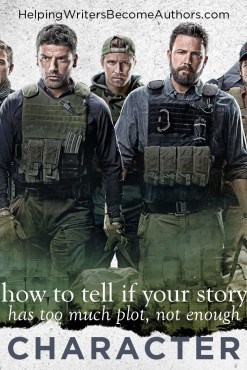 Can a story have too much plot?
Can a story have too much plot?
It might surprise you (especially if you’re a regular reader of the site), but the answer is absolutely, yes.
Implicit in the question of too much plot is the idea that a story should have more of something else. Usually that something else is character. This is where we find the well-entrenched battleground of “plot vs. character.”
It’s unfortunate these two crucial ingredients of story are often presented as exclusive opposites—bitter rivals who can barely stand each other—because the discussion at the heart of “plot vs. character” is much more nuanced. As you probably know if you’ve spent any time on the site, I dislike the whole structure of the “plot vs. character” discussion. Too often, it’s presented as a simplistic either/or paradigm that demands a the clear winner: either plot or character must be the undisputed Monarch of Story.
Ultimately, what that argument is really about is a style of writing. Those arguing for more plot are usually arguing for more conventional, often genre fiction; those arguing for more character are usually arguing for more interior-oriented, often experimental, literary fiction. That’s a discussion for another day, but suffice it that both types of story almost inevitably require both plot and character.
As we’ve discussed in many previous posts, plot and character are less competitors and more symbiotes. Once you understand the self-generating cycle of “character creating plot creating character creating plot,” you understand that the two work optimally when they balance each other within the overall storyform.
But what happens when something is out of balance? What happens when your story has too much character? Or too much plot?
Can Your Story Have Too Much Character Development?
It’s actually really hard to do too much character. Usually, if there’s “too much” character development in a story, it’s a sign not so much of character problems as it is self-indulgent writing in which the author counted too much on readers’ loving the characters enough to watch them do… nothing.

When characters are vibrant and well-drawn, they enter that beautiful cycle of creating plot. It’s tough to write good characters without also writing plot of some sort. Even in more literary-leaning books, such as Charles Frazier’s Cold Mountain, which are obviously preoccupied with character, the characters are vibrant enough to create a forward-moving plot out of even mundaneness such as farm chores.
(It’s true that even more “literary” stories may spend almost their entire word count within the characters’ head, with little happening in the exterior world. Plot is admittedly thin in these stories. The authors have intentionally created a “story” that is more about the descriptive detail or philosophical thesis. Sometimes you’ll also see these devices woven into a larger, more obvious plot, as in some of Thomas Mann’s or Fyodor Dostoyevsky’s brooding asides.)
Pretty much the only time you’ll run into problems with a story having “too much character” is if those characters are either failing to generate plot and/or aren’t entertaining enough to carry the story past scenes that are lacking in external conflict or momentum.
What About Too Much Plot?
Much more common than “too much character development” is the complaint of a story that has “too much plot.”
Poor maligned plot. It’s always getting a bad rap:
“That book was too plot heavy.”
“Too much plot vs. character!”
“That movie was nothing but stuff blowing up.”
But as it turns out none of these problems are about plot. Rather, the problem is “not enough character.”
“Too much plot” is almost always a sign the external conflict is operating on its own accord without being driven by dynamic characters. Stuff is happening, but the characters are just ciphers along for the ride. As a viewer or reader, I’m sure you can think of more than a few stories that fit the bill. They’re frustrating as all get-out. The plot might be great. If it’s a movie, the cast might be stellar. The theme might even be powerfully strong. But if the characters are just vapid automatons, the story feels empty.
5 Signs of Cardboard Characters
Recently, I watched several movies that checked all the above boxes. They could have been great. But they all stumbled and ended up just going through the motions, not because their plots were problematic but because the characters just weren’t there.
Today, we’re going to look specifically at Netflix’s recent army/heist flick Triple Frontier (along with The Red Sea Diving Resort and Amazon’s The Dressmaker) as a way of discovering what went wrong and how you can identify and rectify imbalances between plot and character in your own stories.
1. The Characters’ Personalities Don’t Inform the Plot
Why are your characters in your story? Why are these specific characters in this story? If there’s no reason why this specific character is important to this story, you know you’ve got a problem.
The surest symptom is an unmemorable character. Almost always this lack of memorability is really a lack of specificity. It points to the fact that this character—his personality, his choices, his actions—are so bland and generalized that the character could be switched right out for an alternate take.
You might also recognize the problem if you realize the character’s most important actions in the story could be undertaken just as easily by a different character. When this happens, you can be pretty sure you’ve got a character (or two) who’s nothing more than an interchangeable part—a Lego guy who just needs a new head.
For Example: Triple Frontier has the sweet double advantage of a simple plot and a simple cast—just five main players. But why five? Why these five? With the exception of Oscar Isaac’s protagonist, most of the other characters have little to no development. In particular, Garrett Hedlund and Pablo Pascal are immediately forgettable. One’s a boxer dumb enough to get his brains beat out every week; the other’s a pilot dumb enough to get caught running drugs. That’s pretty much the only specific contributions either make to the story.

The Red Sea Diving Resort suffers exactly the same problem. Its protagonist is sketched pretty well, but almost all the supporting characters exist in the story with no more than one defining characteristic—none of which impact the story. We’ve got tough judo chick, vain beach dude, and stone-cold assassin—but none of them are developed past their characteristic moments.

2. The Story Isn’t About These Characters
Do you know what your story is about? I mean do you really know what your story is about?
The easy answer is that stories are always about their characters. Events in a story exist only to develop character. Either specific characters generate specific events, or they react to events (generated by other characters) in specific ways. If not—if your story is peopled with characters so bland they could be replaced at a moment’s notice—then you end up with a story that ultimately doesn’t mean anything. This is true no matter how great the premise or the action may be.
For Example: In its very first scene, Triple Frontier tells us what it’s about: the negative effects of the warrior lifestyle. It opens with Charlie Hunnam’s character talking to a group of soldiers about how his stint in Special Forces made it difficult for him live without violence or in his post-Army life. This throughline is emphasized many times, culminating when [SPOILER] the team’s once-respected leader, played by Ben Affleck, murders a farmer and is then retributively killed himself [/SPOILER].

But these developments never play organically, mostly because Affleck’s character isn’t well-developed. His Corruption Arc plays out more like a crazy personality shift than it does an organic devolution as the result of his specific choices and actions within the story. Had the script allowed its characters’ development to generate the plot, rather than shoehorning their character twists into the plot beats, the story could easily have shifted into a compelling and thought-provoking thematic discussion.
3. The Characters Lack Concrete and Specific Motivations
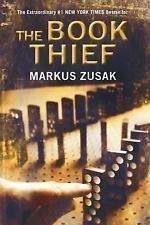
Often, the root cause of cardboard characters is a lack of concrete and specific motivations. What a character does in the plot is often much less important than why she does it. Monumental events can end up feeling bland when we don’t understand what is personally at stake for characters. Even small everyday events take on new significance when we understand what motivates the character (think of Liesel’s reading in The Book Thief).
Even if a character’s motivations aren’t explored in depth, if they are at least indicated early in the story they will have the ability to inform the subtext. What might otherwise be a two-dimensional hero in an action flick can take on at least a semblance of depth (think of Jason Bourne’s deeply personal and existential motivations adding unspoken depth and meaning to even the straight-up-race-em-chase-em of the third installment Bourne Ultimatum).
For Example: Triple Frontier didn’t totally bomb on this one. Viewers are given to understand that all five of the main characters have agreed to the central heist because of their problems in their post-military lives. We are given at least the hint of a specific personal reason for each character, even though only Isaac’s and Affleck’s motivations end up being pertinent.

The Red Sea Diving Resort fares even worse in this regard. Only the protagonist, played by Chris Evans, is given a slight backstory with an explanation of his fanatical motivation for rescuing the Ethiopian refugees. His teammates aren’t afforded even that. They’re there because they’re there, and that’s that. Not only does this skip over what might have been a lot of compelling development, it also robs the film of the potential for much stronger interpersonal conflict than what we get from Alessandro Nivola’s two-dimensional doctor.
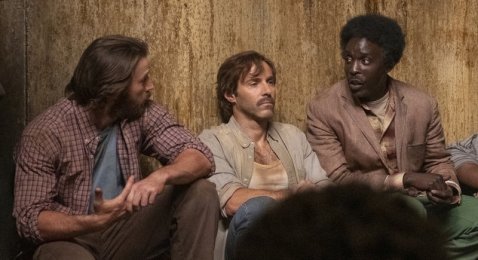
4. The First Half of the Story Spends More Time Setting Up the Plot Than It Does the Characters
If your story spends more time setting up the plot than it does the characters, that’s almost always going to point to a disparity.
Complicated plots are annoying. And boring.
Yep. You read right.
We don’t like stories because the plots are complicated. To begin with, complicated plots usually don’t work. (Think about it. There’s nothing simpler than a good whodunit.) But more than that, complicated plots take time away from what audiences really do enjoy—and that’s complex characters dealing with simple but difficult situations.
These situations often seem complicated, but they’re not. Good plots are as simple as presenting characters with a really difficult lose-lose (or win-win) choice. The mechanics of the choosing might be complicated, but the question itself is not.
When this happens, a ton of story space is freed up for—you guessed it—character development. Most of that development should happen upfront. If the characters aren’t the most compelling thing about your story, then chances are audiences won’t stick with it (or, best case, they stick with it but promptly forget about it).
For Example: Neither Triple Frontier nor Red Sea Diving Resort were terrible in this respect. But compare them to a classic action movie: Jurassic Park.
Jurassic Park balances plot and character just about perfectly. The entire first half of the story is spent on the characters and their reactions to the dilemma with which they’ve been presented (dinosaurs are back—is this a good thing or a very, very bad thing?). No action whatsoever happens until the Midpoint when the tropical storm unleashes the dinos. By then, the characters have been suitably developed so we care what happens to them and we understand why they make the choices they make. From the Midpoint on, the plot can roar furiously to the forefront without seeming like it’s “too much.”
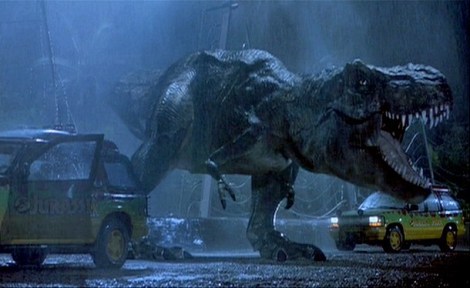
5. Characters Are Specific But Exist Only as Shallow Stereotypes to Fulfill Plot Points
At this point, you might look at your cast and be relieved to discover all your characters have specific roles to play, they all have specific personalities and motivations, and none of their actions could be seamlessly handed over to another character.
But there’s one last problem to be aware of.
Sometimes characters check all the above boxes and yet still exist not to generate plot, but to serve it. Almost always, this character emerges as a stereotype of some sort (either a stereotyped character or a character whose development is forced to fit a formulaic plot). Two of the most common culprits are antagonists (who are bad just because they’re expected to be bad) and love interests (who fall in love with the protagonist just because they’re expected to fall in love). But even protagonists can fall into this pit when they’re heroic just because they’re expected to be heroic or they end up “winning” the conflict just because they’re expected to win.

Be wary of characters going through the motions. Make sure there is a solid and compelling reason for a character’s every action within the story. Just as importantly, make sure his arc is developed throughout the story. Whatever happens to him at the end must fulfill two requirements:
It must be properly set up in the story’s beginning.
It must resonate thematically in the story’s end.
For Example: Most of the characters in Triple Frontier and Red Sea Diving Resort are so one-dimensional they don’t even risk this problem. A better example is found in The Dressmaker. Characterization in this film is excellent until the Third Act when everything falls apart to little thematic purpose.
By far the weakest character throughout is the protagonist’s love interest, played by Liam Hemsworth. Throughout the story, he has little to do except fall in love with Kate Winslett and little reason to do so except… why not? (I have a feeling that might have been better executed in the novel, which I have not read.) But this doesn’t become blatantly problematic until the Third Plot Point when [SPOILER] the character dies out of the blue—and the rest of the Third Act fails to make his death a plot-generating catalyst. Rather, what it feels like is that the love-interest character existed for no other reason than to shock both the protagonist and the audience with his death.[/SPOILER]
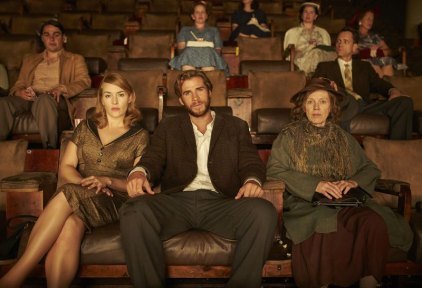
***
The holy grail of good storytelling is great characters in a great plot. Learning to recognize the proper balance of plot and character is sometimes easiest when you first learn to understand what an imbalance looks like. If you can spot and correct instances where your plot is operating without enough input from your characters, you’ll be well on your way to writing exceptional stories.
Wordplayers, tell me your opinions! Have you ever feared you’ve written a story with too much plot—or too much character? Tell me in the comments!
http://www.podtrac.com/pts/redirect.mp3/kmweiland.com/podcast/too-much-plot.mp3
Click the “Play” button to Listen to Audio Version (or subscribe to the Helping Writers Become Authors podcast in iTunes).
The post How to Tell if Your Story Has Too Much Plot, Not Enough Character appeared first on Helping Writers Become Authors.
August 12, 2019
How to Evoke Reader Emotions With “Surprisingness”
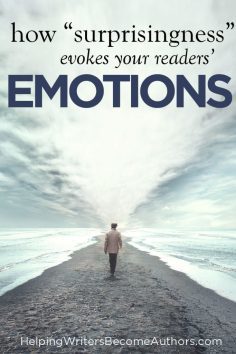 Have you ever read a book for a second, third, even tenth time—just to experience the emotion the story evokes? Clearly the elements of the story aren’t a surprise. You know exactly what to expect. If so, you were benefiting from an author who knew how to evoke reader emotions.
Have you ever read a book for a second, third, even tenth time—just to experience the emotion the story evokes? Clearly the elements of the story aren’t a surprise. You know exactly what to expect. If so, you were benefiting from an author who knew how to evoke reader emotions.
Literary agent Donald Maass says that emotions are most effectively evoked by trickery–when readers aren’t noticing we are manipulating them. He says:
Artful fiction surprises readers with their own feelings.
I can honestly say that, as a reader, the best novels do just that. They evoke such emotions from me—unexpected emotions—that I am stunned by my own reactions.
We writers want to evoke emotion throughout our novels—big, small, expected, and unexpected—so that even when readers know what emotion is being stirred in them, when they see what’s coming, it doesn’t reduce the impact.
The Net of “Surprisingness”
C.S. Lewis said people go back and reread certain stories over and over not to be surprised (because the reader already knows what is going to happen) but for the “surprisingness.” It’s the quality of unexpectedness that delights us, just as it does children who want the same story read over and over. The fact that children know what is about to happen only makes them more excited. Like children, we savor the richness of a story again and again.
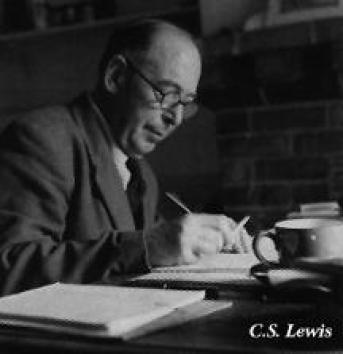
Lewis calls the plot of the story “the net whereby to catch something else.” That“something” is what he refers to as “much more than a state or quality.” Real life, he says, is a series of events, but if that is all it is, there is no deeper meaning or feeling of adventure. That net of the story, for a little while, transcends us and entangles us in the wonder and awe of living. That is what Lewis says the best stories will do.
When we can catch readers in a net of emotions—especially unexpected and surprising ones—that’s powerful magic.
Research shows when someone is surprised, dopamine increases and emotions intensify up to 400%. Heightened attention ensues, as does extreme curiosity, in an attempt to figure out what is happening.
Surprise also causes a shift. It forces a change in perspective. Your reader becomes hyper-alert, curious, in the moment, a perfect state for receiving the unexpected emotion.
How to Evoke Reader Emotions That Are Unexpected
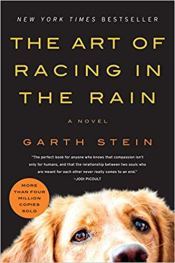 When I began to read the chapter in Garth Stein’s The Art of Racing in the Rain in which Enzo the beloved narrator dog is dying, I just knew what was going to happen to me, what I was about to get into. Most people relate to losing a pet. Most people share that universal affection for sweet animal companions.
When I began to read the chapter in Garth Stein’s The Art of Racing in the Rain in which Enzo the beloved narrator dog is dying, I just knew what was going to happen to me, what I was about to get into. Most people relate to losing a pet. Most people share that universal affection for sweet animal companions.
While I have met many readers who confessed they wept their heart out reading this joyously sad scene, I imagine some readers weren’t moved at all. But I bet almost everyone who read that book felt something. You don’t bother to read a novel told in “first-person dog POV” if you don’t like dogs. And it says something that this novel was on the NYT’s bestseller list for 156 weeks.
The key to its brilliance lies solely in neither the wonderful writing nor the universal resonance of “it’s so horrible to lose someone (person or animal) you love.” Rather, it’s the masterful execution of the scene as joyously sad. I chose that phrase to make a point: when unexpected emotions are evoked in us, it awes us.
Pay attention to that.
You wouldn’t expect a scene that has you watching a dog die—one that breaks your heart—to make you simultaneously happy even to the point of laughing. That’s what makes that scene so brilliant. The whole time I was crying in anguish, I was also laughing with joy. The scene was absolutely authentic in every way. It was utterly surprising as much as it was totally expected.
Don’t Try to Name Emotions
I felt when reading Enzo’s death scene. I could toss around a whole lot of words, but trying to name complex emotions is like trying to catch the wind with chopsticks. The secret lies in Hemingway’s brilliant advice:
Find what gave you the emotion . . . then write it down, making it clear so the reader will see it too and have the same feeling as you had.
Think of it this way. You might not know what to name a particular color shade, but if you have a few tubes of paint and play around with the quantities, you just might be able to re-create the color. That’s what you need to do with the words on your palette to create the same emotion you wish readers to experience.
There is something to be said about building intimacy with characters. It might be hard to evoke emotion in readers for a character to whom they have only just been introduced. This is why Garth Stein placed his most powerful emotional scene near the end of the book, when readers are fully committed to Enzo and Denny, so it might pack the biggest emotional punch.
If you haven’t read The Art of Racing in the Rain, I highly recommend it as a way of understanding the power of “surprisingness.” Those of you who have already read the book may want to read this post and pay attention to the incongruous, unexpected emotions you feel as you go through the powerful passage at the Climax of the story. Note the universal feelings the old dog Enzo expresses that make you think, Me too!
Garth Stein does a brilliant job of not only conveying Enzo’s complex emotions, which are both expected and unexpected, but evoking so many emotions in the reader.
Finding a way to surprise your character and your reader adds micro-tension to your pages. This sparks those emotions in your readers that keep them engaged, whether it be something positive like amusement or negative like outrage or fear. Know how you want your readers to feel and lead them there.
***
Yes, readers love to be surprised. The unexpected surprises us. It might scare us, delight us, or move us profoundly. Yet, often a character’s reaction to a situation is wholly predictable and still it moves us deeply. Consider just about any love story that ends in happily ever after. Predictability really has nothing to do with emotional impact. It’s how the story is shown that matters—how those emotions are conveyed in a way that is believable, masterful, and moving.
Want to learn how to become a masterful wielder of emotion in your fiction? Enroll in C.S. Lakin’s new online video course, Emotional Mastery for Fiction Writers, before September 1st, and get half off using this link!
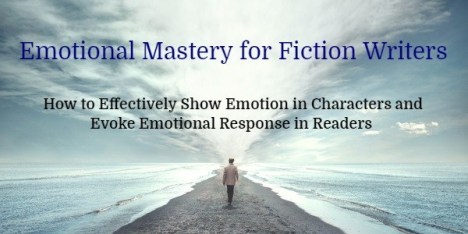
Wordplayers, tell me your opinions! How do you hope to evoke reader emotions by the end of your story? Tell us in the comments!
The post How to Evoke Reader Emotions With “Surprisingness” appeared first on Helping Writers Become Authors.
August 5, 2019
Learn 5 Types of Character Arc at a Glance: The 3 Negative Arcs (Part 2 of 2)
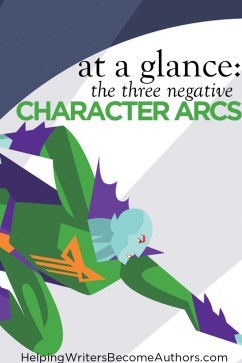 Stories are about change. Sometimes that change is positive, driven by hopeful or even heroic people. But sometimes that change is negative, driven by humanity’s darkest urges and blindnesses. Both stories are necessary, which is why we’re rounding out our two-part series with a beat-by-beat look at the three Negative Arcs—the Disillusionment Arc, the Fall Arc, and the Corruption Arc.
Stories are about change. Sometimes that change is positive, driven by hopeful or even heroic people. But sometimes that change is negative, driven by humanity’s darkest urges and blindnesses. Both stories are necessary, which is why we’re rounding out our two-part series with a beat-by-beat look at the three Negative Arcs—the Disillusionment Arc, the Fall Arc, and the Corruption Arc.
Last week when we looked at the two Heroic Arcs (the Positive-Change Arc and the Flat Arc), I talked about how someone pointed out I didn’t yet have an easily-scannable resource that put the basic structures of all the arcs in one place. This series ended up being too long to put in precisely one place. But as of today, you can at least find the five major arcs all linked from one place!
>>Click Here to Read Pt. 1: The 2 Heroic Arcs
You’ll remember last week’s post also covered the six basics common to all types of arc. Be sure to check that post for the overview, or click the links below for more in-depth posts on each topic:
2. The Lie the Character Believes
3. & 4. The Thing the Character Wants & the Thing the Character Needs
5. The Ghost
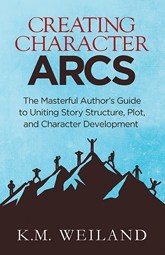
Don’t forget that for a more in-depth look at all things character arc, you can check out my book Creating Character Arcs and its companion workbook.
And now let’s down and dirty with the Negative-Change Arcs.
The Negative Change Arcs
>>Click Here to Read more About the Negative Change Arcs
1. The Disillusionment Arc
Character Believes Lie > Overcomes Lie > New Truth Is Tragic

Graphic by Joanna Marie, from the Creating Character Arcs Workbook. Click the image for a larger view.
The First Act (1%-25%)
1%: The Hook: Believes Lie in Comfortable Normal World
The protagonist believes a Lie that has so far proven necessary or functional in the existing Normal World, which is often a comfortable and complacent place.
12%: The Inciting Event: First Hint Lie Is Untrue
The Call to Adventure, when the protagonist first encounters the main conflict, also brings the first subtle hint that the Lie will no longer serve the protagonist as effectively as it has in the past.
25%: The First Plot Point: Full Immersion in Adventure World’s Stark Truth
The protagonist is faced with a consequential choice, in which the comfortable “old ways” of the Lie-ridden First Act show themselves ineffective in the face of the main conflict’s new stakes. The protagonist will pass through a Door of No Return, in which he is forced to enter the Adventure World of the main conflict in the Second Act, where he is confronted by a stark and painful new Truth.
The Second Act (25%-75%)
37%: The First Pinch Point: Punished for Using Lie
The protagonist is “punished” for using the Lie. In the Normal World, he was able to use the Lie to get the Thing He Wants. But in the Adventure World, this is no longer a functional mindset. Throughout the First Half of the First Act, he will try to use his old Lie-based mindsets to reach his goals and will be “punished” by failures until he begins to learn how things really work.
50%: The Midpoint (Second Plot Point): Forced to Face Truth, But Unwilling to Embrace It
The protagonist encounters a Moment of Truth in which he comes face to face with the thematic Truth (often via a simultaneous plot-based revelation about the external conflict). This is the first time the protagonist consciously recognizes the Truth and its power. He is, however, horrified by the implications of this dark new Truth. Although he can no longer deny the Truth, he is unwilling to fully embrace it or to surrender his comparatively wonderful old Lie.
62%: The Second Pinch Point: Growing Frustration With Old Lie and Disillusionment With New Truth
The protagonist is forced to confront consistently-increasing examples of the Lie’s lack of functionality in the real world. He grows more and more frustrated with the Lie’s limitations. He begins to accept the horrible Truth. He is profoundly disillusioned by his new worldview, even as he begins to be “rewarded” for using the Truth to reach for the Thing He Wants.
The Third Act (75%-100%)
75%: The Third Plot Point: Accepts That Comforting Lie Is Now Completely Nonexistent
The protagonist is confronted by an irrefutable “low moment,” in which he can no longer fool himself that the dark Truth is not true. He must not only accept this new Truth, he must also admit that his comforting old Lie is now completely nonexistent.
88%: The Climax: Wields Dark New Truth in Final Confrontation
The protagonist enters the final confrontation with the antagonistic force to decide whether or not he will gain the Thing He Wants. Directly before or during this section, he consciously and explicitly embraces and wields the dark new Truth.
98%: The Climactic Moment: Fully Acknowledges Truth
The protagonist uses the Truth and all it has taught him about himself and the conflict to gain the Thing He Needs. Depending the nature of his Truth, he may also gain the Thing He Wants (only to discover that, in light of his new knowledge, it is worthless), or he may realize he needs to sacrifice it for his own greater good. As a result, he definitively ends the conflict between himself and the antagonistic force.
100%: The Resolution: Disillusioned With New Truth
The protagonist either enters a new Normal World or returns to the original Normal World, but with a jaded eye now that he knows the Truth.
2. The Fall Arc
Character Believes Lie > Clings to Lie > Rejects New Truth > Believes Worse Lie

Graphic by Joanna Marie, from the Creating Character Arcs Workbook. Click the image for a larger view.
The First Act (1%-25%)
1%: The Hook: Believes Lie
The protagonist believes a Lie that has so far proven necessary or functional in the existing (often destructive) Normal World.
12%: The Inciting Event: First Hint Lie Will Not Save or Reward
The Call to Adventure, when the protagonist first encounters the main conflict, also brings the first subtle hint that the Lie will no longer effectively protect or reward the protagonist in her current circumstances.
25%: The First Plot Point: Lie Now Completely Ineffective; Makes Move Toward Truth
The protagonist is faced with a consequential choice in which the “old ways” of the Lie-ridden First Act show themselves ineffective in the face of the main conflict’s new stakes. The protagonist is given an early choice between old Lie and new Truth. She passes through a Door of No Return, in which she makes a move toward the Truth and, in so doing, is forced to leave the Normal World of the First Act and enter the Adventure World of the main conflict in the Second Act.
The Second Act (25%-75%)
37%: The First Pinch Point: Halfhearted Attempts at Truth Only Half-Effective
The protagonist tries to wield the Truth as a means of gaining the Thing She Wants, but does so only with limited understanding or enthusiasm. She is stuck in a limbo-land where the old Lie is no longer a functional mindset, but where her halfhearted attempts at the Truth prove likewise only half-effective.
50%: The Midpoint (Second Plot Point): Glimpses Truth, Rejects Truth, Chooses Worse Lie
The protagonist encounters a Moment of Truth in which she comes face to face with the thematic Truth (often via a simultaneous plot-based revelation about the external conflict). This is the first time the protagonist consciously sees the full power and opportunity of the Truth. However, she also sees the full sacrifice demanded if she is to follow the Truth. Unwilling to make that sacrifice, she rejects the Truth and chooses instead to embrace a Lie that is worse then the original.
62%: The Second Pinch Point: Lie Is Effective, But Destructive
Uncaring about the consequences, the protagonist wields her Lie well and finds it effective in moving toward the Thing She Wants. However, the closer she gets to her plot goal, the more destructive the Lie becomes both to her and to the world around her.
The Third Act (75%-100%)
75%: The Third Plot Point: Complete Failure to Gain Either Want or Need
The protagonist is confronted by a “low moment,” in which she experiences a complete failure to gain the Thing She Wants. This failure is a direct result of the collective damage wrought by her Lie in the Second Half of the Second Act. The “means” caught up to her before she reached her “end.” However, even when faced by all the evidence of the Lie’s destructive power, the protagonist still refuses to repent or to turn to the Truth.
88%: The Climax: Last-Ditch Attempt to Salvage Want
Upon entering the final confrontation with the antagonistic force, the protagonist doubles down on her Lie in a last-ditch attempt to salvage the Thing She Wants.
98%: The Climactic Moment: Total Destruction
Crippled by the Lie (in both the internal and external conflicts), the protagonist is unable to gain the Thing She Wants (or gains it only to discover it is useless to her). Instead, she succumbs to total personal destruction.
100%: The Resolution: Aftermath
The protagonist must confront the aftermath of her choices. She may finally and futilely accept the inescapable Truth. Or she may be left to cope, blindly, with the consequences of her choices.
3. The Corruption Arc
Character Sees Truth > Rejects Truth > Embraces Lie
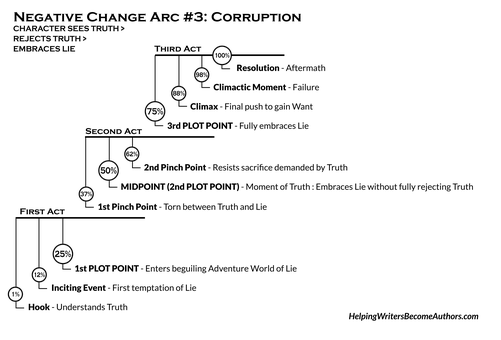
Graphic by Joanna Marie, from the Creating Character Arcs Workbook. Click the image for a larger view.
The First Act (1%-25%)
1%: The Hook: Understands Truth
The protagonist lives in a Normal World that allows for or even encourages the thematic Truth. As a result, the protagonist starts out with an understanding of the Truth.
12%: The Inciting Event: First Temptation of Lie
The Call to Adventure, when the protagonist first encounters the main conflict, also brings the first subtle temptation that the Lie might be able to serve the protagonist better than the Truth.
25%: The First Plot Point: Enters Beguiling Adventure World of Lie
The protagonist is faced with a consequential choice, in which he is enticed out of the First Act’s safe, Truth-based Normal World into the Second Act’s beguiling, Lie-based Adventure World. Not realizing the danger (or believing he is weighing the consequences), the protagonist is lured through the Door of No Return by the promise of the Thing He Wants.
The Second Act (25%-75%)
37%: The First Pinch Point: Torn Between Truth and Lie
The protagonist is torn between his old Truth and the new Lie. The Lie proves itself effective in moving him nearer the Thing He Wants. But he wages an internal conflict as he recognizes he is moving further and further away from his old convictions and understandings of the world.
50%: The Midpoint (Second Plot Point): Embraces Lie Without Fully Rejecting Truth
The protagonist encounters a Moment of Truth in which he comes face to face with the Lie in all its power. He recognizes he cannot gain the Thing He Wants without the Lie. Although he is not yet willing to fully and consciously reject the Truth, he makes the decision to fully embrace the Lie.
62%: The Second Pinch Point: Resists Sacrifice Demanded by Truth
The protagonist is “rewarded” for using the Lie. Building upon what he learned at the Midpoint, the protagonist will start implementing Lie-based actions in combating the antagonistic force and reaching toward the Thing He Wants. The Truth pulls on him, demanding sacrifices he is not willing to give. He begins resisting the Truth more and more adamantly.
The Third Act (75%-100%)
75%: The Third Plot Point: Fully Embraces Lie
The protagonist utterly rejects the Truth and embraces the Lie. He acts upon this in a way that creates a “low moment” for the world around him (and for him morally, even if he refuses to recognize it). He is now willing to knowingly endure the consequences of rejecting the Truth in exchange for what he sees as the rewards of embracing the Lie.
88%: The Climax: Final Push to Gain Want
The protagonist enters the final confrontation with the antagonistic force to decide whether or not he will gain the Thing He Wants. Unhampered by the Truth, he pushes forward ruthlessly toward his plot goal.
98%: The Climactic Moment: Moral Failure
The protagonist uses the Lie and all it has taught him in an attempt to gain the Thing He Wants. He may gain the Thing He Wants and remain senseless to the evil engendered by his actions. Or he may gain the Thing He Wants only to be devastated when he realizes it wasn’t worth what he sacrificed. Or he may fail to gain the Thing He Wants and be devastated by the realization that his sacrifices to the Lie were fruitless. One way or another, he definitively ends the conflict between himself and the antagonistic force.
100%: The Resolution: Aftermath
The protagonist must confront the aftermath of his choices. He may turn away from the Lie, admitting his mistake and accepting the consequences. Or he may callously forge ahead, intent on continuing to use the Lie to further his own ends.
***
Needless to say, there are many variations of these five arcs. But if you can identify and master these five, you’re well on your way to writing a powerful evolution that will resonate with all your readers.
Wordplayers, tell me your opinions! What types of character arc have you written? Tell me in the comments!
http://www.podtrac.com/pts/redirect.mp3/kmweiland.com/podcast/negative-change-arcs.mp3
Click the “Play” button to Listen to Audio Version (or subscribe to the Helping Writers Become Authors podcast in iTunes).
The post Learn 5 Types of Character Arc at a Glance: The 3 Negative Arcs (Part 2 of 2) appeared first on Helping Writers Become Authors.
July 29, 2019
Learn 5 Types of Character Arc at a Glance: The 2 Heroic Arcs (Part 1 of 2)
There are only two or three human stories, but they go on repeating themselves as fiercely as if they never happened.–Willa Cather
The many different approaches to story theory break down the number of “human stories” into different categories. Perhaps there are just two—comedy and tragedy. Perhaps there are Vonnegut’s eight “shapes.” Today, I’m going to argue for five—the five basic types of character arc.
These include the two Truth-driven or heroic arcs—the Positive-Change Arc and the Flat Arc. And the three Lie-driven or Negative-Change Arcs—the Disillusionment Arc, the Fall Arc, and the Corruption Arc.
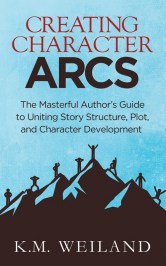
I’ve talked about all these arcs extensively, beat by beat, both in my series of posts and my book Creating Character Arcs and its companion workbook. But as someone recently pointed out in an email, I’ve never compiled a basic structural beat sheet of what all the arcs look like at a glance.
As of now, I’m remedying that with a two-part series that puts the basic principles and types of character arc all in one place. Today, we’re going to start by talking about, first, the basic ingredients necessary in any type of character arc, followed by a detailed but at-a-glance look at the two “truth-based” heroic arcs.
The 6 Foundational Ingredients of All Character Arcs
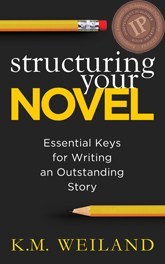
Let’s get started. All five arcs share several commonalities, beginning with their foundational structure (which I prefer to break into three acts and ten beats, as you’ll see below). Beyond that, they also share the following six foundational ingredients, which can then be mixed to the author’s needs according to whichever arc has been chosen for the story.
1. The Thematic Truth
The theme is your story’s Truth. It is a universal statement about how the world works. In almost all instances (with the arguable exception of the Disillusionment Arc), the Truth will represent an ultimately positive (if sometimes painful) value, which will help the characters interact more fruitfully and less futilely with the world.
>>Click Here to Read More the Truth Your Character Believes
2. The Lie the Character Believes
The Lie is a misconception about the world that stands in contrast to the Truth. At the beginning of the story, the Lie will be preventing someone (either the protagonist or, in the case of the Flat Arc, supporting characters) from seeing, understanding, and/or accepting a necessary Truth. The entire character arc—and, indeed, the entire story—is about if and how the character(s) will be able to evolve past the Lie into the Truth.
>>Click Here to Read More About the Lie Your Character Believes
3. & 4. The Thing the Character Wants vs. the Thing the Character Needs
The inner thematic conflict of Truth vs. Lie will manifest in the external plot conflict as the Thing the Character Wants vs. the Thing the Character Needs. Usually, the Need is nothing more or less than the Truth, although it can take a physical form as well. The Want may be something large and abstract (such as “respect”), but it should boil down to a very specific plot goal (“a promotion” or “a college degree”). Your character’s evolving proximity to the Want and the Need will change in direct relation to the specific character arc.
>>Click Here to Read More About the Thing Your Character Wants and the Thing Your Character Needs
5. The Ghost
The Ghost (sometimes also referred to as the “wound”) is the motivating catalyst in your protagonist’s backstory. This is the reason the character believes in the Lie and can’t see past it to the Truth. As its name (coined by script doctor extraordinaire John Truby) suggests, the Ghost is something that haunts the character, something that can’t just be moved past. Often, it is a traumatic event, but even something seemingly positive (such as a parent’s pride in a child) can cause a character to believe the damaging Lie.
>>Click Here to Read More About the Ghost
6. The Normal World
The Normal World is the initial setting in the story’s First Act, meant to illustrate the character’s life before the story’s main conflict. Depending on the type of arc, the Normal World will symbolically represent either the story’s Truth or the story’s Lie. The Normal World may be a definitive setting, which will change at the beginning of the Second Act, when the character enters the Adventure World of the main conflict. However, it may also be more metaphorical, in which case the setting itself will not switch, but rather the conflict will change the setting around the protagonist (for example changing the atmosphere from friendly to hostile).
>>Click Here to Read More About the Normal World
The 2 Heroic Arcs
The Positive-Change Arc and the Flat Arc are the “happy” or “heroic” arcs. In these stories, the protagonist either learns or already knows the Truth—and uses it to positively impact the story world.
1. The Positive-Change Arc
Character Believes Lie > Overcomes Lie > New Truth Is Liberating
>>Click Here to Read More About the Positive-Change Arc

Graphic by Joanna Marie, from the Creating Character Arcs Workbook. Click the image for a larger view.
The First Act (1%-25%)
1%: The Hook: Believes Lie
The protagonist believes a Lie that has so far proven necessary or functional in the existing Normal World.
12%: The Inciting Event: First Hint Lie Will No Longer Work
The Call to Adventure, when the protagonist first encounters the main conflict, also brings the first subtle hint that the Lie will no longer serve the protagonist as effectively as it has in the past.
25%: The First Plot Point: Lie No Longer Effective
The protagonist is faced with a consequential choice, in which the “old ways” of the Lie-ridden First Act show themselves ineffective in the face of the main conflict’s new stakes. Although the protagonist does not yet recognize the inefficacy of the Lie, he will still pass through a Door of No Return, in which he is forced to leave the Normal World of the First Act and enter the Adventure World of the main conflict in the Second Act.
The Second Act (25%-75%)
37%: The First Pinch Point: Punished for Using Lie
The protagonist is “punished” for using the Lie. In the Normal World, he was able to use the Lie to get the Thing He Wants. But in the Second Act, this is no longer a functional mindset. Throughout the First Half of the Second Act, he will try to use his old Lie-based mindsets to reach his goals and will be “punished” by failures until he begins to learn how things really work.
50%: The Midpoint (Second Plot Point): Sees Truth, But Doesn’t Yet Reject Lie
The protagonist encounters a Moment of Truth in which he comes face to face with the thematic Truth (often via a simultaneous plot-based revelation about the external conflict). This is the first time the protagonist consciously recognizes the Truth and its power. He does not yet, however, recognize the Truth and the Lie as incompatible. He will attempt to use both in the Second Half of the Second Act.
62%: The Second Pinch Point: Rewarded for Effectively Using Truth
The protagonist is “rewarded” for using the Truth. Building upon what he learned at the Midpoint, the protagonist will start implementing Truth-based actions in combating the antagonistic force and reaching toward the Thing He Wants. He will be “rewarded” by successes as he moves nearer and nearer his ultimate plot goal.
The Third Act (75%-100%)
75%: The Third Plot Point: Rejects Lie
The protagonist is confronted by a “low moment” brought about by his continuing refusal to fully reject the Lie. Finally, the protagonist must confront the true stakes of what he stands to lose if he continues to embrace the Lie. Feeling all but defeated, he rejects the Lie. Implicitly, he also fully embraces the Truth.
88%: The Climax: Embraces Truth
The protagonist enters the final confrontation with the antagonistic force to decide whether or not he will gain the Thing He Wants. Directly before or during this section, he consciously and explicitly embraces and wields the Truth.
98%: The Climactic Moment: Uses Truth to Gain Need
The protagonist uses the Truth and all it has taught him about himself and the conflict to gain the Thing He Needs. Depending upon the nature of his Truth, he may also gain the Thing He Wants, or he may realize he needs to sacrifice it for his own greater good. As a result, he definitively ends the conflict between himself and the antagonistic force.
100%: The Resolution: Enters New Truth-Empowered Normal World
The protagonist either enters a new Normal World or returns to the original Normal World, where he can now live as a Truth-empowered individual.
2. The Flat Arc
Character Believes Truth > Maintains Truth > Uses Truth to Overcome World’s Lie
>>Click Here to Read More About the Flat Arc.

Graphic by Joanna Marie, from the Creating Character Arcs Workbook. Click the image for a larger view.
The First Act (1%-25%)
1%: The Hook: Believes Truth in a Lie-Ridden World
The protagonist believes a Truth that the rest of the Normal World around her rejects. The Normal World and most of its characters are mired in a central Lie which enslaves them in some way.
12%: The Inciting Event: Challenged to Use Truth to Oppose Lie
The Call to Adventure, when the protagonist first encounters the main conflict, presents a direct challenge to her Truth. The question at this point is whether or not she can be convinced to take action in wielding her Truth against the Lie of the world around her.
25%: The First Plot Point: World Tries to Forcibly Impose Lie
The protagonist is faced with a consequential choice, in which the antagonistic force attempts to forcibly impose the Lie upon her or others. In refusing to relinquish her Truth for the Lie, the protagonist passes through a Door of No Return, in which she is forced to leave the Normal World of the First Act and enter the Adventure World of the main conflict in the Second Act.
The Second Act (25%-75%)
37%: The First Pinch Point: Uncertain if Truth Is Capable of Defeating Lie
The protagonist struggles to use her Truth against the strength of the antagonistic force’s Lie. She experiences doubt about whether her Truth is capable of defeating the Lie and, as a result, if it is indeed the Truth.
50%: The Midpoint (Second Plot Point): Proves Power of Truth to World
The protagonist perseveres in following her Truth. She offers a Moment of Truth to the world around her. This is the first time the protagonist will demonstrably exhibit the full power and purity of the Truth. At least one significant supporting character will be impacted (positively or negatively) by this revelation.
62%: The Second Pinch Point: Lie-Driven Characters Fight Back
In response to the protagonist’s powerful demonstration of Truth at the Midpoint, other Lie-driven characters will double down on the Lie and use it to mount a formidable counter-attack upon the protagonist and her Truth.
The Third Act (75%-100%)
75%: The Third Plot Point: Lie Seems to Triumph Externally
The Lie-driven tactics of the antagonistic force hit the protagonist hard, even to the point of the protagonist’s seeming defeat in the external conflict. The protagonist is confronted by a “low moment” brought about by the supporting characters’ continuing refusal to fully reject the Lie. The protagonist must confront the true stakes of what she stands to sacrifice if she continues to embrace the Truth. Even in the face of overwhelming odds, she reaffirms her conviction of the Truth.
88%: The Climax: Final Confrontation Between Truth and Lie
The protagonist enters the final confrontation with the antagonistic force to decide whether or not she will gain the Thing She Wants. She consciously and explicitly embraces and wields the Truth.
98%: The Climactic Moment: Truth Defeats Lie
The protagonist uses the Truth (often with the help of positively-changed supporting characters) to defeat the antagonistic force and gain the Thing She Wants and Needs (which are often the same thing in a Flat Arc, since the protagonist always possesses an understanding of the Truth).
100%: The Resolution: New Truth-Empowered Normal World
The protagonist enters a new Normal World, which is empowered by the Truth thanks to her actions.
***
Once you’ve mastered these two heroic arcs, you’re well on your way to writing powerful stories of redemption, conviction, and relatable righteousness.
Stay tuned, because next week, we’re going to do a side-by-side comparison of the three Negative-Change Arcs, which offer an equal amount of power in dramatizing all the ways human journeys don’t always turn out the way we might hope.
Wordplayers, tell me your opinions! Have you written either of these types of character arc in your stories? Tell me in the comments!
http://www.podtrac.com/pts/redirect.mp3/kmweiland.com/podcast/types-of-character-arc-heroic-arcs.mp3
Click the “Play” button to Listen to Audio Version (or subscribe to the Helping Writers Become Authors podcast in iTunes).
The post Learn 5 Types of Character Arc at a Glance: The 2 Heroic Arcs (Part 1 of 2) appeared first on Helping Writers Become Authors.
July 22, 2019
How to Make Your Plot a Powerful Thematic Metaphor
 Your thematic metaphor is the unifying idea that emerges as the meaning behind your characters’ adventures in their story world. Once you have identified your story’s thematic principle, the real work begins. How will you seamlessly join theme to plot?
Your thematic metaphor is the unifying idea that emerges as the meaning behind your characters’ adventures in their story world. Once you have identified your story’s thematic principle, the real work begins. How will you seamlessly join theme to plot?
Masterful authors create stories that, on their surfaces, may seem to be entirely plot—and yet are deeply thematic. They do this by getting their readers or viewers to feel and think deeply without being obvious about it. The seams with which they connect theme to plot are held together with invisible threads of highly sophisticated metaphor.
The Power of Thematic Metaphor in Storytelling
The metaphor is one of the most utilitarian techniques in a writer’s tool bag. We use it most simply in basic sentence constructions when describing via comparison (I’ve used the technique twice already in this post—in comparing metaphor to binding threads and in referencing a writer’s skill set as a “tool bag”). At its most macro (and indeed meta) level, story itself is nothing more than a large-scale metaphor; authors create made-up people going on made-up adventures as descriptive metaphors for real life.
It’s no surprise that somewhere in between the sentence level and the story level, we find yet another repetition of the pattern. This is where we come upon the powerful technique of molding plot into a visual, external metaphor for the story’s invisible, internal theme.
This interpretation of story can be applied with varying levels of explicitness.
At one end of the spectrum, allegories (such as The Lion, the Witch, and the Wardrobe and Animal Farm) deliberately present themselves as blatant metaphors (for Christianity and Soviet Russia, respectively).

At the other end, fact-based or docudrama stories (such as the The Great Escape or I, Claudius) evoke the metaphorical inference of theme by extrapolating and/or shaping a meaning from actual events.

(Successful stories in this category stand in stark contrast with their unsuccessful brethren, which present factual events but fail to transform plot into story by identifying the thematic metaphor or unifying meaning at the core of those events. Ron Howard’s movie In the Heart of the Sea comes to mind. It’s problematic enough on its own, but especially when compared to the famous epic with which it shares source material—the tremendously metaphoric and thematic Moby Dick.)

In between the two extremes, we find any number of varyingly explicit approaches to story-as-metaphor. Most “tales,” “yarns,” and “fables” (as John Gardner distinguishes them) are immersed in the increasingly deeper waters of non-reality (aka fantasy) and therefore increasingly obvious metaphor.
For example, archetypal fiction—aka, genre fiction—is shaped by time-honored metaphors that preconceive the story’s most basic themes—even as the specific details of the author’s individual handling of the familiar storyforms create nuance, irony, and sometimes even inversion. The Hero’s Journey in action stories and the Happily Ever After at the end of romances both come pre-packaged with a certain amount of inherent thematic metaphor.
What Does a Successful Thematic Metaphor Look Like?
I’ve talked several times before about my admiration for the Japanese movie Wolf Children. This is because it presents one of the best blends of metaphoric theme with an anti-formulaic story.
The story is founded on the high-concept premise of a single mother secretly raising her half-werewolf children. That’s a premise that could have been taken in a dozen directions, including some very genre choices (action-adventure or romance, chief among them). Instead, the story is a leisurely, almost “literary” series of vignettes that vividly show the mother’s struggles to protect, provide for, and prepare her children for their adult lives.
This is a story about this particular mother raising these particular children with their very particular werewolf challenges. It is presented in quasi-realistic fashion with little emphasis on the fantasy elements. In short, it’s a very straightforward story that doesn’t really seem to about anything more than what it’s about.

But by the time the end credits roll, to a poignant “remember-when” slideshow of the children growing up, it becomes clear that what viewers have just watched is a deeply wrought metaphor for parenthood. We realize the whole werewolf thing was just a metaphor for the strangeness and the often seemingly insurmountable challenges all parents face in taking responsibility for rearing their children.
3 Questions to Ask to Find Your Best Thematic Metaphor
Your first inkling about a story might be thematic. When this happens, you have the advantage of shaping the plot to be a metaphor for that theme. But more often, what comes first is plot and character. This is trickier, because it means you can’t so much construct your metaphor as discover it. You must look within the existing/evolving plot to try to identify the emerging theme.

This is a delicate process that should remain as organic as possible. Balancing plot, character, and theme is like juggling: you can handle one ball for only a short time before briefly pushing it away in favor of the next ball—and so on, over and over and over again. (I call this the bob-and-weave technique, used when outlining to hopefully achieve a seamless unity amongst the Big Three of plot, character, and theme.)
You must be careful not to impose theme too heavily upon plot (at the risk of ending up with a heavy-handed morality play) or plot too heavily upon theme (at the risk of a contrived and empty thematic argument). Rather, you must carefully examine, weigh, and feel both plot and theme to discover what each is telling you about the other.
Most plots offer certain inherent themes. It’s your job to discover what metaphor your plot is offering from amidst its characters’ entertaining adventures. All you have to do is ask the right questions.
Here are three to get you started.
1. What Does This Story Look Like From Afar?

It’s easy to get mentally buried under all the minutiae of even a brand-new story idea. The characters. The relationships. The action. Individual scenes. Even the character arcs.
All these things are just chips of glittering glass in the overall mosaic of your story. In order to truly see what you’ve got, you have to step way, way back.
Up close, the sinking of the Essex in 1820 seems to be about nothing more than a rogue whale taking out a whaling ship. In the Heart of the Sea certainly couldn’t find any greater meaning than that (or at least not one it was able to cohesively portray). Herman Melville, writing about the same events, stepped back far enough to see something else—which he transformed into a ferociously enduring metaphor about man’s obsessive search for and battle against God, fate, and the meaning of life.
Although great dialogue, interesting characters, and entertaining scenes are important, don’t lose sight of the fact that they’re just the trees in your forest. The forest itself is the story. Only in viewing the entire forest can you identify (and then double-check) what theme is emerging.
2. Does Your Story Have a Shape?
In considering what theme your plot might evoke, try to analyze the many parts of your story for emergent patterns. Stop seeing stars and start seeing constellations.
The more you add to your plot, and the more your characters do in the story, the more you should start seeing patterns. This is where we find the endless variation of theme even in genre stories. Romance stories are always about falling in love. But it’s only from the particular patterns of each book’s characters and their actions that we find the specific metaphors of each book’s themes. Jane Eyre is not Pride & Prejudice and To All the Boys I’ve Loved Before is not The Fault in Our Stars.

This is true even for different stories within the same series. Whatever the series’ overarching theme may be, each story inevitably offers its own private theme, based on its specific events—as we see in series such as the Marvel movies, each of which is thematically insular (with varying degrees of success).
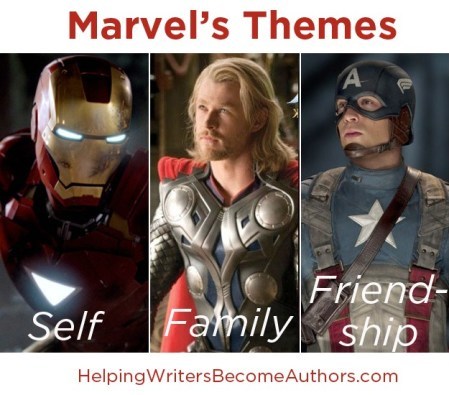
>>Click here to read about each MCU movie in The Do’s and Don’ts of Storytelling According to Marvel
You can start by looking at your cast of characters. What do they have in common? Don’t just look for areas or traits in which they are similar; look, too, for those in which they are diametrically opposite, since these areas actually have more in common than not.
From there, look at the characters’ relationships with each other. What challenges are cropping up repeatedly, either in comparison or contrast to one another?
Then start looking at your individual scenes and story events. What patterns are emerging? Are you starting to see an overall shape? Are the majority of your story pieces pointing toward a deeper internal meaning?
If not, that’s okay. It could be you either don’t yet have enough stuff happening in your novel for there to be any patterns. Or it could mean you need to do a little careful pruning to eliminate the meaningless and enhance the meaningful.
3. What Does Your Story Look Like When Stripped to Bare Essentials?
This is an extremely important question—but also an extremely tricky one. It’s kind of like asking, “If there was no story, what would the story be about?”
Fortunately, you don’t have to go that far. Rather, the point of the exercise is to strip away window dressing. You’re wanting to remove all your story’s fancy clothing, wigs, makeup until you get down to the flesh. And then you want to see past the flesh itself to nothing but the skeleton.
What does your story’s skeleton look like without any distracting coverings?

Your story’s structure is the best place to start. Consider all the major plot points. What do they tell you about what this story is really about? Do they all align? Are they all pieces of the same whole, all pointing to a consistent answer to the questions, “What is this story about?” and “What does it mean?”
Then go even further. What are your characters’ motivations? Goals? Strengths? Weaknesses? Do they all align? What patterns emerge?
Underneath all the fun fluff of any given story, you will find its archetypal underpinnings. You will (or should) find the universal truths that will make this story resonate. At the deepest level, those truths will be vast. But you will also find, built upon the big truths, some smaller ones. Those are the Truths this story is trying to tell, and those are the Truths the plot must exemplify through the metaphor of its own specific patterns and actions.
Wordplayers, tell me your opinions! How is your plot a thematic metaphor for what your story is really about? Tell me in the comments!
http://www.podtrac.com/pts/redirect.mp3/kmweiland.com/podcast/thematic-metaphor.mp3
Click the “Play” button to Listen to Audio Version (or subscribe to the Helping Writers Become Authors podcast in iTunes).
The post How to Make Your Plot a Powerful Thematic Metaphor appeared first on Helping Writers Become Authors.
July 15, 2019
Publisher Rocket: What Is It? And How Can It Help You Sell Books?
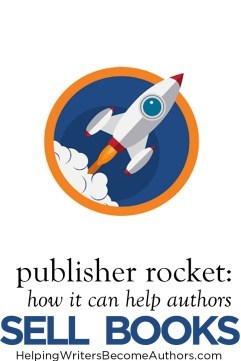 There are two great questions faced by every writer. One is How do I write a great book? And the other is How do I get people to buy it?
There are two great questions faced by every writer. One is How do I write a great book? And the other is How do I get people to buy it?
Inherent in both answers is a lot of demystification, dedication, discipline, and hard work. Most of the discussions on this site are in answer to the first question. Mostly, that’s because, even after all these years, I still feel more than a little mystified myself by the intricacies of figuring out how to sell books.
When people ask me for marketing advice, I’m usually quick to point them to the experts from whom I have learned and continue to learn. One of those experts also happens to one my favorite people in the writing sphere—all-around cool guy Dave Chesson. Although I’ve not yet had the pleasure of meeting him in person, we’ve chatted online and on Skype, he’s been awesome enough to personally answer a lot of my questions, and he’s guided me on some of my book launches.
He runs the great site Kindlepreneur and offers several excellent marketing courses (including a free primer on Amazon ads). Most importantly to our discussion today, however, he’s the brains (and the brawn?) behind what has become one of my favorite bits of marketing tech—the Publisher Rocket software.
If you’ve gotten far enough along in your book-publishing journey to start researching categories, keywords, and genres on Amazon (much less trying to book together an ad campaign), then you can no doubt join me in groaning in frustration over the sheer tediousness of the endeavor. Groan no more! Or groan more quietly anyway. :p
In preparing to publish Wayfarer, my most recent novel, I gave Publisher Rocket a try—and loved it. It made what is usually my least favorite part of the entire publishing process not only easier, but actually fun. Today, I thought I’d introduce Dave to those of you who don’t know him and get him to share more about why he designed Rocket and how it can help writers market more easily and more effectively. (And please note, I’m not an affiliate for the program—just a fan!)
KMW: Can you tell us a little about you the person, you the writer, and your background and experience in marketing?
Dave Chesson: At my core, I’m the father of three, and a major sci-fi nerd. But I never really thought I’d be an author or had what it takes. I have a form of dyslexia and throughout my life, I believed I was never meant to write. However, that ended up not being the case. In 2013, while serving in the US Navy, I was deployed to Korea for a two year assignment that wouldn’t let me bring my family with me. They call it a geo-bachelor tour. It was at that point that I realized my biggest goal was to find a new career that would allow me to be home with my children and doing something that truly made me feel alive.
Thankfully, Amazon had created Kindle Direct Publishing (KDP) which allowed someone like me to start writing and get it out to the world. However, writing still didn’t come easy for me. I wasn’t good enough to just sit down and write anything I wanted and captivate unknown readers. Instead, I started trying to understand Amazon and their shoppers. Why did Amazon choose to show one book over another when I type something into its search bar. More importantly, what things were shoppers looking for and not finding? It was from this information that I formulated my books and starting writing books I knew people wanted. And since that point, my books alone have brought in over $275,000 allowing me to leave the Navy, and fully work from home with my family.
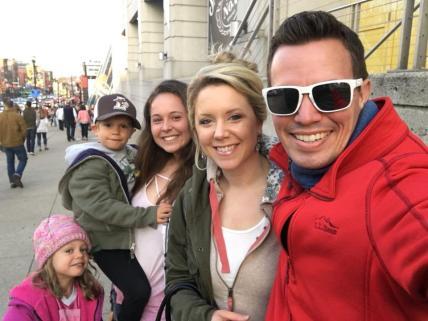
Since then, I started Kindlepreneur.com, an advanced book-marketing website where I strive to teach authors how to market their books better. There are too many great authors out there that have the story and the skills but struggle to get their books above the rest.
KMW: What is Publisher Rocket and how will it help writers? How did you come up with the idea for Publisher Rocket and what made you follow through on creating the program?
DC: Publisher Rocket is the culmination of that which I learned about Amazon’s market. It helps authors find out what Amazon book readers are searching for, what kind of books they want, and helps authors get their books in front of them.
The idea of Rocket came to me when I constantly kept hearing authors ask whether or not there was tool that would do all of the marketing for them. Something to help them find keywords, and categories.
With Publisher Rocket, authors can now see exactly what’s going on in the book market and get vital information on how to get their books discovered by readers. Plus, it was painstakingly designed to be very intuitive and easy to use.

Dave (pictured right) wrote his first book on a South Korean warship, showing you truly can write from anywhere.
KMW: Can you tell us a little about the program’s four major features—Keyword Search, Competition Analyzer, Category Search, and AMS Keyword Search—what they each do, and how people can use them?
DC: Publisher Rocker has four main features.
The Keyword Feature helps authors find the right keywords for their books to rank for, and it does this by telling authors what words shoppers use when shopping, how many shoppers type that into Amazon per month, how much money books are making that rank for that term and how hard would it be to rank for that keyword.
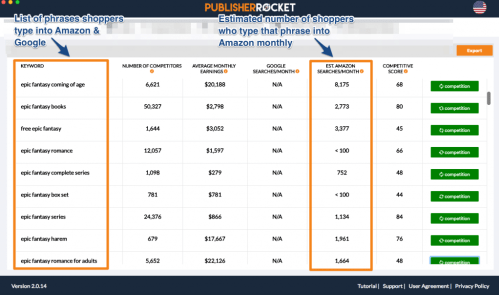
Our Competition Analyzer helps you to get a deep look into your competitors and find out how much money they are making, and what they are doing right.
The Category Feature has all 16,000+ Amazon categories inside of it so authors can finally see all the options out there (even the secret ones) and can see how many books they’d need to sell in order to be #1 that day . You can even rank the categories from those in which it’s easiest to be a bestseller and to those that are hardest. With this, authors can easily see the best categories possible to make them an Amazon Bestseller.
Finally, our AMS Keyword Feature helps authors build profitable Amazon Books ads more effectively and efficiently, saving them loads of time and energy.
KMW: How is Publisher Rocket different from similar keyword-research programs?
DC: There are many out there with different pros and cons. But what makes Rocket unique over all of them is that it is a downloadable software you can keep for life. Since I’m an author myself, I’m always working to add to the program. I make every update and upgrade free for current owners. Furthermore, we’re not only being used by Publishing Companies at mass level, we also received accolades from Amazon itself praising the methods taught on keyword discovery and optimization.
KMW: Your excellent blog Kindlepreneur focuses on marketing advice and industry reviews. Can you tell us more about that and some favorite posts you’ve featured lately?
DC: At Kindlepreneur, I love doing articles that are step by step in nature, give reviews of services or software, and or incorporate important book marketing strategies.
Here are some examples of each:
A bit ago, I wrote an article specifically for fiction writers that got major praise from Amazon itself. It teaches authors how to come up with fiction keywords. After publishing it, Amazon not only recognized it, but they promoted it to their readers. They also changed their FAQ on “Make Your Book More Discoverable with Keywords“ under Useful Keyword Types to reflect this information. So, be sure to check that out.
I also love comparing author tools or software and creating side-by-side comparisons like I did when comparing Thinkific to Teachable to decide which course creator would be best. I wanted to focus on this because there is a rise in authors making courses as either another income source or to create an amazing content upgrade for their books.
Sometimes, I love taking a deep dive in an overlooked area like I did with my look at each part of a book. Have you ever stopped to develop an incredible dedication? Or put together an ironclad copyright page? With this breakdown of each part, we also point you to some of the best content on the Internet to help you craft the best parts possible, thus strengthening every part of your book. It’s projects like these that I absolutely love making—something overlooked but so crucial.
KMW: Any big projects you’re currently working on?
DC: Over the past three years that Rocket has been out, my team and I have upgraded to two different versions, made seventy-two updates, and added three major features. Each time, we’ve made Rocket even better for users, since all updates and upgrades are free for users.
So, my major project is always looking for ways to improve and add to Rocket. This year alone, we have some major things we’ll be adding, which include adding each and every international Amazon market. We’re also going to be adding more to our Category feature to include historical values, monthly averages of bestseller status, volatility of categories, and my favorite: telling authors how many shoppers per month go to a specific category to purchase a book. And again, each upgrade will be free for current owners.
On a different note though, I’m channeling my inner child a bit and creating a comic book—something I’ve always wanted to do. Currently it will be titled A Writer’s Life and comprise funny strips about what it’s like to be an author. I’ll be chronicling each step in the project and writing an article for Kindlepreneur showing everything I did to create, publish, and print the comic book. Hopefully, that will be complete this summer.

KMW: Finally, what’s your top bit of marketing advice for fiction writers?
DC: Start your email list as soon as possible. With every book you create, your list will increase. With the increase in your list, your next book marketing push will be easier.
However, here’s another major tip: Do not offer a random short story or book as an email opt-in gift. Instead, write a prelude or side story to the story they just read. People are more likely to invest their email address for a story they’re already invested in, rather than a brand new story.
Yes, that means a content upgrade for every book or series. However, you’ll quickly find that the conversion rate of readers to email subscribers will dramatically increase.
KMW: Thanks so much for stopping by and sharing with us today, Dave! I have a ton of appreciation for you and everything you do in and for the writing community. As complicated as actually writing a good book can be, marketing is no less a difficult subject for most of us. Your know-how and dedication in giving the rest of us a leg up in building our sales platforms is much appreciated!
Wordplayers, tell me your opinion! What is your greatest challenge in marketing your fiction? Tell me in the comments!
The post Publisher Rocket: What Is It? And How Can It Help You Sell Books? appeared first on Helping Writers Become Authors.
July 8, 2019
Why Do So Many Bad Books Sell on Amazon?
 Why do so many bad books sell on Amazon? This is the question many authors are asking these days. There are far more bad books than good books (which is always true of any entertainment field), but what’s different this time is that low-quality stories often seem to sell better than good stuff.
Why do so many bad books sell on Amazon? This is the question many authors are asking these days. There are far more bad books than good books (which is always true of any entertainment field), but what’s different this time is that low-quality stories often seem to sell better than good stuff.
“Low-quality” isn’t a judgment about taste, reading level, or genre. I mean that books with poor writing, obvious filler, nonexistent characterization, and sometimes entire copy-pasted passages get into the Top 100 of popular categories. As a reader, when I fall for one of these top-charting books, I find myself thinking, This book shouldn’t be anywhere close to the top.
How Can So Many Bad Books Sell on Amazon?
Aren’t there any moderators?
Let’s talk about Amazon, the indie author’s self-serving best friend. Anyone who wants to sell fiction has to sell on Amazon, or else they’re just nibbling around the edges with Kobo, B&N, etc.
Paid advertising is not an option for most authors; it’s a challenge to break even on a $3 product, much less make a profit. Instead, authors have had to rely on Amazon to show their books through also-boughts and category charts.
For a while, this worked well. Amazon would show you books you truly wanted to buy, and those books were often more creative or served niches better than traditionally-published books. But now, Amazon’s recommendations aren’t based on quality or relevance, or even sales performance.
What they show you is mostly based on:
1. How similar something is to books you have already bought.
1. How recently it was published.
Yes, Books “Expire” Now
Amazon actively suppresses the visibility of works more than 90 days old. Even if books sell well and get many good reviews during that period, wham! They fall off the cliff on Day 31, 61, or 91. (This is well covered on kboards. Search for “30 day cliff,” and you’ll find an avalanche of intel.)
Obviously, books don’t suddenly lose quality after a set number of days. Amazon does this because it makes them more money, the same reason they do anything. For an author to stay visible, algorithm-gaming has to happen, and that gaming starts at the product level.
Publish Something New, Every 30 Days (Even if It Stinks)
Currently, the best way to stay visible on Amazon in category fiction, such as YA, mystery, or romance, is to release every 30 days.
This is because Amazon promotes new books as rising superstar or hot new trend. But after 30–90 days, your book is kicked from the showroom to the stockroom, where only people who specifically search for it will ever find it.
Authors simply can’t write fresh, imaginative, well-crafted novels in 30 days. But authors can manufacture copycat stories with interchangeable parts in 30 days (again, not judging—this is a paraphrased quote from a Harlequin writer).
Some of the most successful genre names are assembly lines of ghostwriters, editors, and trend-scrapers. The thought process goes like this:
Shark shifters are popular right now, so let’s bang out a shark-shifter romance and call it Deep Blue Billionaire, and stuff the subtitle with keywords. Just copy the plot from last month’s tiger-shifter billionaire romance, make the girl a maid instead of a personal chef, and change the names and city.
A ghostwriter will fill in the outlined plot. It will get a cursory copyedit. A cover designer makes it pretty and clickable at thumbnail-size. And that’s a product. It works… for about 30 days.
I can’t blame these assembly lines for existing. They’re playing the game the best they can. No author can afford to invest their time in quality if they’re actively penalized for it.
The Algorithms Sell You What You’ve Already Bought
The recommendations reward this book-fabrication process. If I buy The French Duke’s Dilemma by bestseller Author A, and they’ll show me The German Prince’s Problem by savvy copycat Author B. The plot points will be exactly the same, perhaps with the covers done by the same designer.
Amazon looks at the newest book that is the closest match to what’s in my purchase history. It’s skin-deep and simple, but it must work because Amazon keeps doing it.
That is, if you get organic also-boughts at all.
Why Have Those Also-Boughts Disappeared?
Aren’t also-boughts what drive sales? Why did Amazon take them away?
I’m speculating here, but I saw an article from 2017 that claimed e-book sales were stagnating.
If true, this is a problem for Amazon, which needs growth to keep corporate people happy. They have to make more money, and if it’s not coming from book-buyers, it has to come from somewhere else.
When did they roll out AMS ads? Was that… 2017, perhaps?
I find it quite possible they removed the organic also-boughts to “encourage” authors to take out in-house ads (Amazon Marketing Services / Amazon Ads). This is the row of sponsored products that often replaces the organic product recommendations. Authors pay for those.
Now, when a book is sold, Amazon can mine 3 different resources:
The Books. Amazon gets a commission.
Readers. Their data and profiles, to sell them more product.
Authors, who must make up for the lack of organic visibility with ads they pay Amazon for. Since authors aren’t generally great marketers, many probably pay more per borrow or sale than they make, but just don’t keep track of it. Cha-ching!
All this encourages lower-quality books to be produced and shown to buyers.
But if the Books Stink, Why Are People Still Buying Them?
People compromise and have poor impulse control—factors marketers exploit regularly. Readers grab junk food over real food because when they’re hungry, they’re hungry now. To make it worse, Amazon’s decreasing delivery times and increasing list of conveniences are training us to be impatient, spoiled children.
So What Can You Do to Compete With All the Junk-Food Books?
Gaining visibility at a low-enough cost to make a profit on sales is the entire game. Here are a few techniques that are working in my sphere, which is dark fantasy and fantasy romance:
1. Serialize Your Fiction
Amazon wants something every 30 days? Fine. Serialize your works. Break them up into 20–30k word installments and publish them every 4 weeks. Is it ideal? Of course not. You’ll get 3-starred by some people for putting out incomplete stories, but that’s better than getting no visibility at all.
To test, you can take an old work that’s not selling and chop it up. Don’t change anything, because you’d be putting out multiple versions of the same book and confusing people. Just re-issue the pieces with some new covers and see what happens. Amazon doesn’t care if what you publish is 2,000 words or 200,000 words, as long as it comes every 30 days.
2. Cross-Promote With Other Authors
Use newsletter swaps and reciprocal Facebook posts. These are becoming more and more important, now that Amazon is not giving books organic traffic. If my niece loved Detective Manny & The Dazzling Diamonds, chances are I’d also buy Super-Sleuth Sammy & The Enchanting Emeralds. Reach out to other authors. They’re all in the same situation. Despite what you may feel, they’re not your competition. They’re your allies.
3. Record Your Own Audiobook
This is not to put on Audible, but as free content for places you can’t otherwise reach. Upload it to iTunes, Amazon, Spotify, YouTube, everywhere you can think of. The purpose is to get more people aware of what you do. You don’t even have to do the whole book, because the function is exposure. You can read novellas, short stories, etc. Just be organized and link back to your book or website.
4. Start a Patreon or Other Subscription Site
There is a lot of info on how to do this already, so I won’t get into it here. Even if you don’t have that many patrons, you will have a Review Army which will give you those necessary 5–10 first reviews to bump your Amazon rank for new releases. Your podcast could integrate with a Patreon easily.
***
I hope this at least gives you some insight on what’s going on. I don’t think the way Amazon operates is sustainable, but it’s what we have to work with now.
Wordplayers, tell me your opinions! What tactics have you tried to gain visibility with your on-sale books? Tell me in the comments!
The post Why Do So Many Bad Books Sell on Amazon? appeared first on Helping Writers Become Authors.
July 1, 2019
Taking Your Writing to the Next Level: Whole-Life Art
 You are a writer.
You are a writer.
If you’re reading this blog because you’re jotting down a story, even if it’s just on a napkin right now, then you get to call yourself a writer.
A writer. An author. A scribbler. A storyteller.
Maybe that’s all you are. Maybe that’s all there is to be.
But maybe not. Maybe there’s more that we, as writers, can aspire to.
A few months ago, I mused on how authors can level up to become “artists.” While that pursuit is one mostly executed from within the trenches of the craft, I think one important aspect is an all-engulfing concept I’ve recently taken to calling “whole-life art.”
Most writers with a true dedication to the craft know being an author is a lot like being an athlete. Weekend warriors don’t cut it. Even showing up at the court or the rink or the track on a regular basis cuts it only if the person in question happens to be unbelievably talented or unbelievably masochistic, or both.
Rather, dedicated athletes work out daily, watch every calorie they put in their mouths, and practice rigorous mental discipline. If someone is truly an athlete, then he or she is never not an athlete.
Authors have exactly the same opportunity. This opportunity isn’t just about taking our art to the next level, although that’s certainly a major benefit. It’s about embracing the beauty and power of our art until it reaches beyond the page to inform every part of our lives.
5 Aspects of Whole-Life Art
I can’t remember a time when stories weren’t intertwined, in some way or another, with every part of my life. When I was young, it was effortless. I breathed stories, lived stories. I romped through them with a delightful lack of control, since I wasn’t yet actually requiring myself to write them. As an emerging adult, I embraced the fierce discipline of the artistic life mostly in a desperate bid to turn those beautiful breathings into stories that were actually readable. When my efforts eventually turned into a vocation, art as a paradigm permeated my life even more.
Now, having graduated from what I suppose might be considered the First Act of my life as a writer, I find that art has become more than just a joyous expression or worthy occupation. It has become my defining template. If I am to continue growing as a person, I see now that I must grow as a writer. And vice versa: if I am to grow as a writer, I must grow as a person.
In thinking about these ideas of late, I’ve also been thinking about the varied aspects of life and how we, as writers, can fully integrate them all in a pursuit of whole-life art.
1. Mental: Never Stop Learning
Most people probably think about writing as primarily a mental exercise. Indeed, writers are often stereotyped as “smart” people, who will read anything they can get their hands on, can ideate on command, and excelled at school (except for math in all its forms and that one mean English teacher who almost crushed our dreams).
If there’s one commandment for writers, it’s never stop learning. However much we may (or may not) naturally enjoy mental pursuits, it’s easy to slip into lazy habits and confine our rigorous thinking only to our stories (and sometimes not even then).
Be disciplined in what and how you learn. A few years ago, I was legitimately depressed to realize that at best I’m only likely to read 3-4,000 more books in my lifetime. That’s not very many when juxtaposed against the massive amount of extant information.
That realization catalyzed my need to triage my reading list. There are so many interesting books—both fiction and non-fiction. Which do I think will be most interesting, influential, and important in my life, both generally and particularly at this moment?
I don’t always choose rightly (the fifteen minutes that just got sucked down the drain of Looper.com could undoubtedly have been better spent on… just about anything). But I want to make a concerted effort to spend my life’s worth of learning credits on the best quality stuff.
2. Physical: Stay Grounded in the Real World
If writers are known for their mental chops, they’re also generally known for being near-sighted klutzes who spend too much time nursing carpal tunnel at the keyboard rather than getting kissed by the sun while sweating their hearts into good shape.
A totally obvious bit of advice that kind of blew my mind was this: your brain is a part of your body.
If you want the mental piece, then you’ve got to support it with sound physical choices.
Cue the “whole-life” part getting a little too real.
Most obviously, this means choosing the scrambled eggs over the hot dogs, as well as the evening walk over the couch and that oh-so-tempting infomercial. More than that, it means staying grounded in our physicality.
Writers live much of our lives in our heads. But if we’re living those imaginary lives at the expense of our real lives something is awry. Not only are we missing out on precious and irreplaceable reality, we’re also risking distancing ourselves and our art from the very truths we’re trying to access.
Balancing the need to live in our heads against the equally vital need to live in the moment is crucial. This is harder than ever in our overwhelmingly teched-out, urban lives. It requires consciousness and intentionality.
One trick I find especially helpful is accessing and appreciating the elemental basics: fire (e.g., lighting a candle), earth (e.g., cultivating plants), air (e.g., walking outside), and water (e.g., taking a shower). I also try to surround myself with fewer artificial substances (plastic) and more natural ones (wooden furniture, woolen or cotton clothing, real books, etc.). I’m continually surprised by how much more grounded and present I feel when I do these things.
3. Emotional: Seeking, Understanding, and Sharing Catharsis
Many of us come to (and stay with) writing because it is such an intensely emotional experience. There are many reasons for this, but I believe they all eventually boil down to catharsis—relief or “purification” through an intense vicarious experience.
The intensity of these emotions is only ever evoked because they resonate:
on an archetypal subconscious level (as with most genre formats)
on a conscious personal level (as with any event or person who represents or reminds us of literal experiences in our own lives)
on an empathetic level (as with any story situation that causes us to understand a truth about someone else’s experience)
In short, the emotional catharsis that informs powerful stories only arises out of artistic truthfulness.
Sometimes artists tap into this truth without consciously understanding it. When this happens, the artist always feels it. It may be exhilarating, or it may be extremely painful. Either way, these are usually the feelings that drive us to both create and consume stories.
This is where our art has the ability to truly start informing our lives—and, if we are willing to do the work, where we can further that understanding in our lives so that it returns to inform our art. This only happens when we as authors are willing to self-inspect both our work and ourselves.
Why have these powerful emotions arisen from these stories (whether our own or someone else’s)?
Why are these emotions in our lives?
What are they telling us?
What are they perhaps hiding?
Where are they guiding?
“Self-work” encompasses so much. Above all, it is a discipline of self-reflection and self-honesty. No one is better positioned to accomplished this than a writer—someone who stands poised both on the symbolic cusp of the subconscious and on the stage of articulated self-expression. To some extent, it is work that occurs naturally by the very act of writing. But it is work. We only reap the benefits if we’re willing to grub deep in our inner soil.
4. Social: Seeking the Benefit and Betterment of All
A question I find endlessly interesting is, “Do you write for yourself or for others?” Writers have adamant opinions on both sides of the fence, ranging from “if you’re not writing for yourself, then you’re writing for the wrong reasons” to “if you’re not writing for others, what’s the point?”
Although I personally tend to favor the former response, writing is undeniably an overwhelmingly social pursuit. It is, above all, a form of communication. Although much good can arise simply from the private communication of one’s self with one’s self, you have to wonder if the old adage about “a tree falling in the forest” doesn’t also apply to stories. If no one reads them, do they really matter?
Whole-life art necessarily seeks a balance between the health of the individual (who may gain her primary benefit from writing for herself and who may choose to keep certain writings private for any number of reasons) and the health of the society of which that individual is a part. The two are intertwined. To live whole and healthy lives, people require a purpose. Usually inherent within that is the idea of purposefully and positively impacting society.
Plato empowered writers everywhere (and, if they’re as smart as they think they, scared the pants off them as well) when he blazoned:
He who tells the stories rules the world.
Unless you happen to be that rare writer whose tree falls in a lonely forest, you will impact the world, whether in a small way or a large way. The more you dedicate yourself to whole-life art, the more responsibly you will be able to wield that power.
5. Spiritual: Art as Meditation
There is something about “true art” that stops people in their tracks and, even if just for a moment, takes their breath from them. It can happen with street art or the Venus de Milo, a comic book or War and Peace. These moments of true art are deeply spiritual. They are glimpses of the infinite, a breath of air momentarily too big for our lungs to hold.
True art is unspoken wisdom, unspoken truth. It is a deeply spiritual experience, for both creator and audience. These moments are linked with the kind of emotional catharsis we talked about, above. But the spirituality of art is more as well.
Artists everywhere stumble onto these moments all the time. I used to say I always knew I was onto something good if I experienced the sensation of “my chest collapsing.” Indeed, these moments are often the lodestars that keep us moving through the dark uncertainties of our art.
They don’t, however, always have to be uncertainties we “stumble” over. The discipline of whole-life art can position you to map the night sky and to start recognizing constellations. I venture that art, like life, will always be a mystery, but the greatest adventure of the artistic life is that we get to spend it on a voyage of endless discovery.

In The Art of Fiction, John Gardner wrote:
…the main work the writer must do for himself is bring about change in the writer’s basic character, helping to make him that “true Poet,” as Milton said, without whom there can be no true Poem.
For writers, the Poem isn’t just on the page. It’s all around us, waiting to be put on the Page, however best we may.
Your writing doesn’t have to—and shouldn’t—stop when your fingers leave the keyboard. Your pursuit of excellence in your craft should inform every aspect of your life—mentally, physically, emotionally, socially, and spiritually. Make conscious choices, and let your pursuit of story guide you to the larger Story all around you.
Wordplayers, tell me your opinions! What is currently your greatest challenge to living as a “whole-life artist”? Tell me in the comments!
http://www.podtrac.com/pts/redirect.mp3/kmweiland.com/podcast/whole-life-art.mp3
Click the “Play” button to Listen to Audio Version (or subscribe to the Helping Writers Become Authors podcast in iTunes).
The post Taking Your Writing to the Next Level: Whole-Life Art appeared first on Helping Writers Become Authors.



